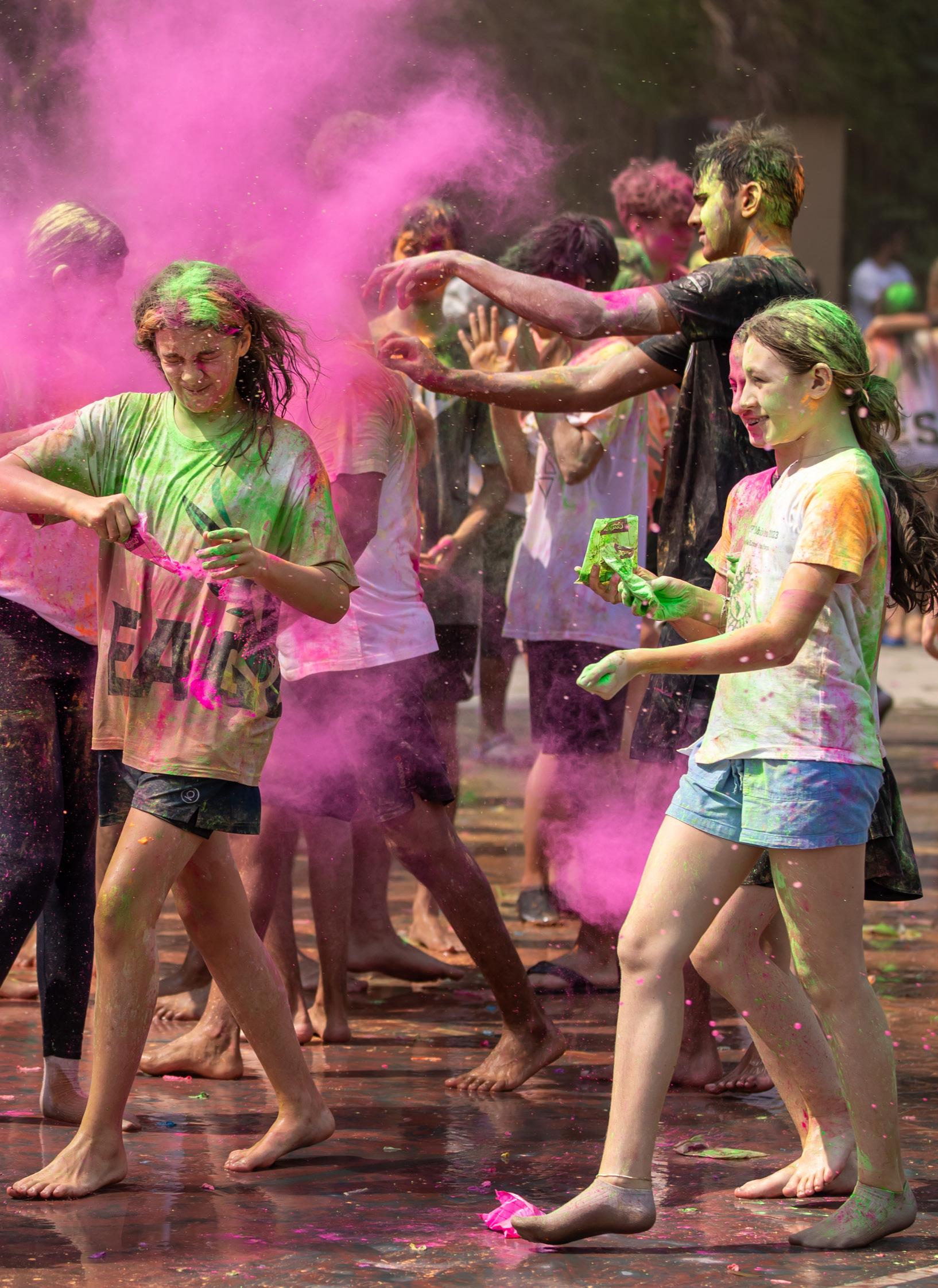
2023–2024
THE YEAR OF WELL-BEING
IMPACT REPORT
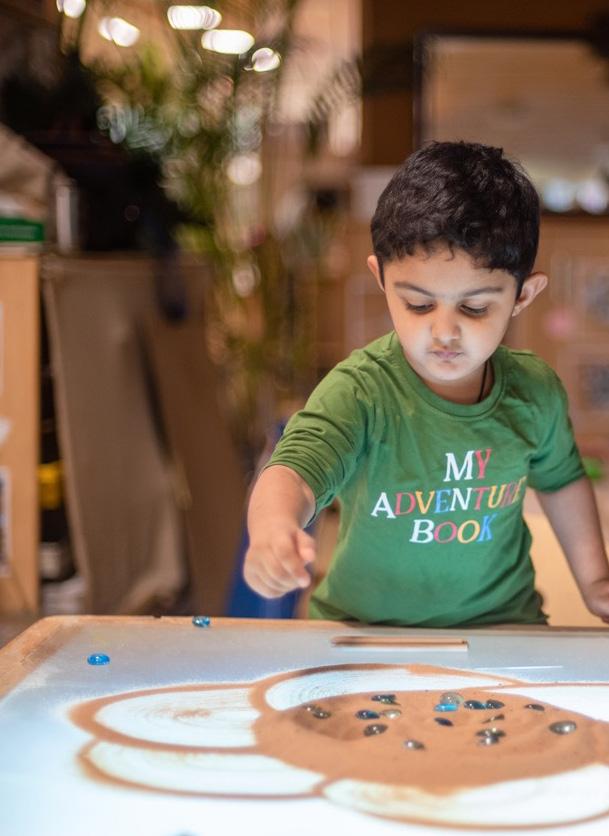
I THINK FINDING A VOICE AT ASB IS LIKE FINDING THAT ONE THING THAT YOU FEEL AS THOUGH YOU ARE SPECIAL FOR HAVING, SOMETHING THAT MAKES YOU STAND OUT. AND BECAUSE WE HAVE SUCH A SMALL SCHOOL, IT’S REALLY EASY TO FIND THE ONE THING THAT MAKES YOU FEEL SPECIAL. TEACHERS KNOW YOU, AND CLASSMATES KNOW YOU, AND IT GIVES YOU A LOT OF CONFIDENCE AND IT ALSO MAKES YOU AN INDIVIDUAL AT ASB.
ZARA, GRADE 9
“ ”

FROM THE HEAD OF SCHOOL 02 FROM THE BOARD 03 COMMUNITY PROFILE 04 YEAR AT A GLANCE 06 STRATEGIC AGENDA OBJECTIVE 1 09 Well-being STRATEGIC AGENDA OBJECTIVE 2 15 Diversity, Equity, Inclusion, and Justice STRATEGIC AGENDA OBJECTIVE 3 19 Personalized learning STRATEGIC AGENDA OBJECTIVE 4 25 Student voice STRATEGIC AGENDA OBJECTIVE 5 29 Host-country connections PROFESSIONAL LEARNING 33 PARENT COMMUNITY 35 ASB GRADUATES 39 IMPACT REPORT 2023–2024 CONTENTS
LETTER FROM THE HEAD OF SCHOOL
Through its 40+ year history, the American School of Bombay (ASB) has held itself accountable to its community toward the promises in its mission, vision, core values, and other key foundational documents that drive programs. This Impact Report—the very first of its kind—continues
this tradition in a way that we hope you find
both interesting and useful.
The objectives of this publication are two-fold:
1) 2)
To be accountable to our cherished students and families in our fidelity to ASB’s mission et al. through the use of metrics to analyze student data.
To drive internal processes toward institutional improvement, providing a focus on what matters most to our students’ future success (i.e. what gets measured, gets managed).
Producing an Impact Report will be an annual exercise at ASB. We will share what is working well, what is not yet working at our expected caliber, and also what needs to be much improved. We owe you radical transparency, and will strive for this standard. Keep in mind that this inaugural report is a beta version, which we’ll build upon each year as the institution rebuilds and expands its data analysis muscle.
The design of this report is deliberate. Each pillar of the five-year ASB Strategic Agenda will receive its own analysis, starting with a Promise (a commitment ASB will

make to its students through an inclusive statement) and a corresponding Metric (a measure of key performance indicators (KPI) against the promise statement).
To assess the degree we are meeting each promise, we will turn to two types of data: Big Data (generally quantitative data that requires statistical data analysis to find patterns that are superficial, where conclusions can only be generalized) and more impactful, Rich Data (data brought to light using qualitative, ethnographic research methods that uncover people’s emotions, stories, and models of their world. It is sometimes referred to as valuable data).
From this data analysis, we will draw Conclusions from what we find, and visualize the data it is based upon. We will then articulate the Responses to these learnings, and provide a glimpse into how this will inform activity and improvements in the next school year. We will sprinkle student testimonials and institutional artifacts throughout the report.
We thank the ASB teachers and staff for their professionalism in and out of the classrooms, for their contributions to this report, and for their unwavering commitment to our students. We thank you for sending your children to ASB (we don’t take this for granted), and we thank you in advance for reading this publication.
Be well,
Dr. Paul Richards Head of School
2 • IMPACT REPORT 2023–2024 / THE YEAR OF WELL-BEING

LETTER FROM THE BOARD
Soon, ASB will end the 2023-2024 school year on a high note. As we reflect on this significant year— our 42nd—and look forward to the future, I am delighted to introduce ASB’s very first Impact Report.
This first of its kind report not only highlights our many achievements and milestones but also outlines our strategic goals and KPIs, our measures of success. Through these well-defined KPIs/metrics, we will continue to raise the bar on student education while investing in staff development opportunities and ensuring regular surveys with our community as an input to guide our future actions/initiatives.
This year, we have seen remarkable progress in various areas. Our students excelled academically, artistically, and athletically. Our remarkable educators have been the driving force behind this success, providing innovative instruction and unwavering support to our students.
Our all-new strategic framework keeps mental health and wellness at the heart of all we do, is committed to strengthening bonds with our host country, and strives for greater diversity and inclusion while addressing the needs of our diverse student body.
The enclosed report provides a detailed account of our efforts and the outcomes we have achieved. It is a true testament to the hard work and dedication of Dr. Richards, and the entire leadership team at ASB.
I invite you to read this report and provide your feedback to help us do better. Thank you for your passion, and your engagement—together let us steer ASB to even greater heights.
Warm regards,
Ruchira Chaudhary Board President
AMERICAN SCHOOL OF BOMBAY • 3
COMMUNITY PROFILE
OUR MISSION is to inspire all of our students to continuous inquiry, empowering them with the skills, courage, optimism, and integrity to pursue their dreams and enhance the lives of others.
Students
Students
Students 135
4 • IMPACT REPORT 2023–2024 / THE YEAR OF WELL-BEING
12 140+
Staff Instructional Staff Tenure 0 – 5 Years USA 30% INDIA 25% KOREA 8% JAPAN 5% UK 5% GERMANY 4% MALAYSIA 3% SAUDI 2% AUSTRALIA 2% FRANCE 2% OTHER 13% STUDENT NATIONALITIES Nationalities Staff Instructional Staff 64% of Teachers Hold Masters Degrees or Higher 205 58 % 5 –10 Years 10+ Years
188 Nationalities
598 23 % 19%
275 Students
42 PreK–12
BEYOND THE CLASSROOM
Who are we? Who do we serve? These are critical questions to ask in getting to know the American School of Bombay, its community, and its mission. The big data can help demonstrate whether we are meeting the promise that every student will engage in experiences and opportunities beyond the classroom.
COMMUNITY AND SOCIAL RESPONSIBILITY
HIGH SCHOOL
“WHAT IS YOUR LEVEL OF PARTICIPATION AND ENGAGEMENT WITH CSR?” <
1 2 3 4 5
ATHLETICS AND CO-CURRICULAR ACTIVITIES
3,273 co-curricular sign-ups for activities in academics, athletics, service, and the arts—including participation in interscholastic conferences such as the following:
SAISA South Asian Inter-Scholastic Association
ASIAC American Schools in India Activities Conference
MIDDLE SCHOOL
100 %
Participation for Middle School students in the CSR program at ASB
MIDDLE AND HIGH SCHOOL
15+
Experiential trips within India for Yatra (High School) and Week Without Walls (Middle School)
A NOTABLE GROWTH AREA for ASB is to gather rich data on the Metric that accompanies this Promise: All students participate in co-curricular programming, in or outside of ASB, that aligns with their interests, passions, and dreams, and this engagement has made an impact on them and others.
MUN Model United Nations
ISTA International Schools Theatre Association
AMIS Association for Music in International Schools activities per student
*That’s an average of
5.5
AMERICAN SCHOOL OF BOMBAY • 5
NOT ENGAGED HIGHLY ENGAGED > 48 % ENGAGED 36 % HIGHLY ENGAGED 16 % SOMEWHAT ENGAGED
*

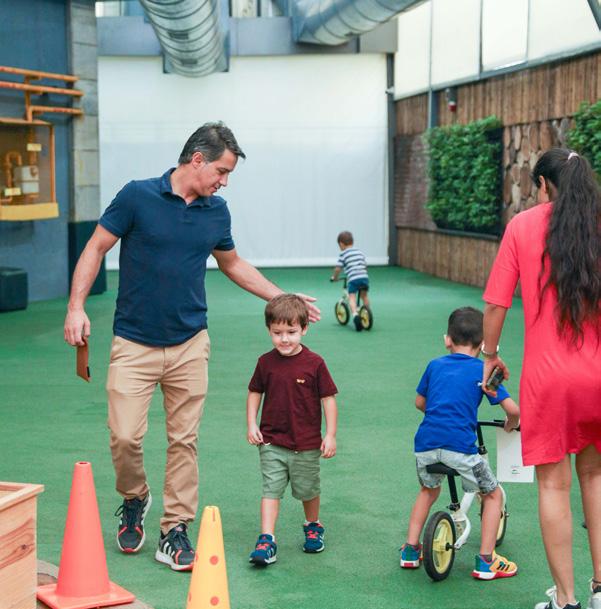

TEACHER ACADEMY PROGRAM LAUNCH



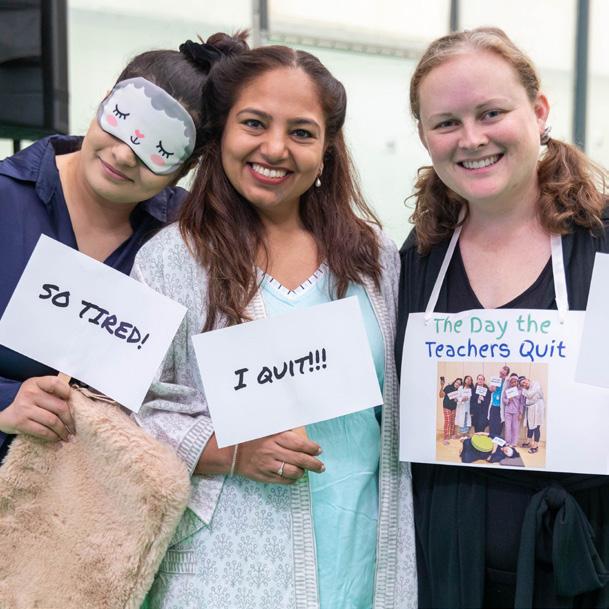


6 • IMPACT REPORT 2023–2024 / THE YEAR OF WELL-BEING 23-24 08
09 10 11 12
FIRST DAY OF SCHOOL
DIWALI FESTIVAL HS YATRA & MS WEEK WITHOUT WALLS INCREDIBLE INDIA COMMUNITY WELCOME AT BLUE SEA ASB HOSTS ASIAC SOCCER
ES BOOK CHARACTER WEEK
ES, MS, AND HS OPEN HOUSES
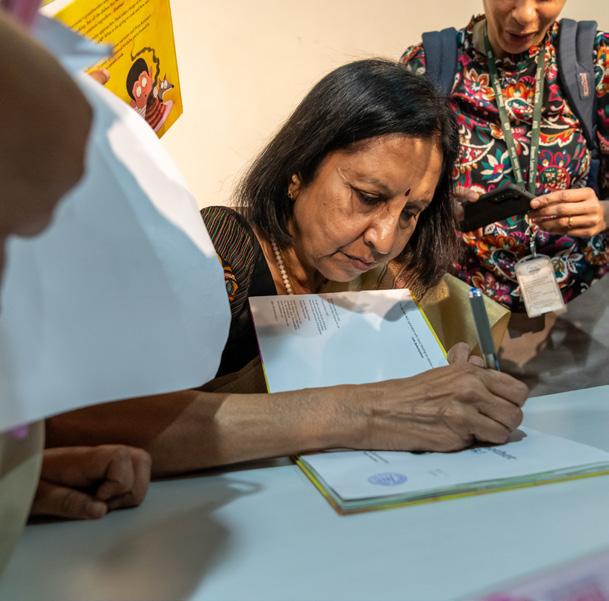

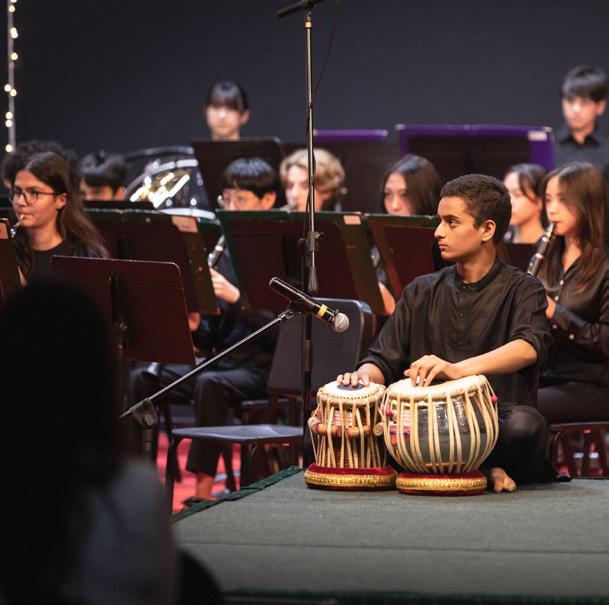
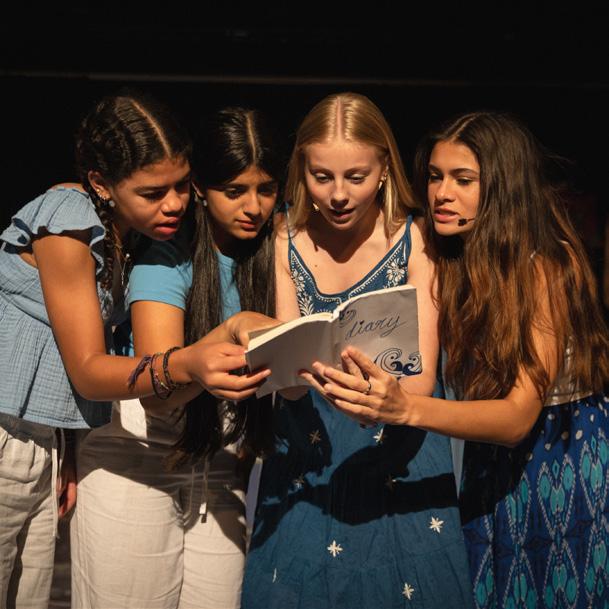




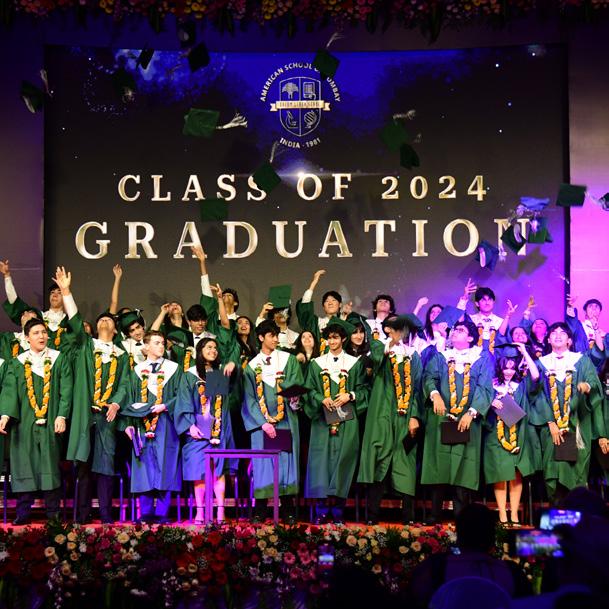
AMERICAN SCHOOL OF BOMBAY • 7 23-24 THE YEAR AT A GLANCE 01 02 03 04 05 ES AND MS/HS SOLVE 3.0 EVENTS HOLI CELEBRATION HERE I GO AGAIN HIGH SCHOOL PRODUCTION FESTIVAL OF NATIONS ASBMUN CONFERENCE CLASS OF 2024 GRADUATION NATIONAL JARUL BOOK AWARD CEREMONY 70+ ACTIVITIES LAUNCH FOR SEMESTER 2 CCA MS/HS WINTER CONCERT
8 • IMPACT REPORT 2023–2024 / THE YEAR OF WELL-BEING
STRATEGIC OBJECTIVE 1
WELL-BEING
ELEVATE WELL-BEING AS ESSENTIAL, SO EACH STUDENT AND STAFF MEMBER CAN THRIVE
Even before the world changed in 2020, the general well-being of students and teachers globally was a concern. The pandemic amplified this concern. As schools have returned to “normal”, and staff and students again manage the demands and other pressures of achievement, learning, and growth, ASB has chosen to make well-being the first among equals in its five-year Strategic Agenda. Specifically: To elevate well-being as essential, so each student and staff member can thrive. This is the Promise associated with well-being.
Thriving in school (and in life) is indeed the standard we are seeking, and the first of our Promises. Julie Allison, ASB’s Coordinator of Wellness and Student Support has helped establish the following definition for thriving: a state in which community members experience sustainable physical, mental, and relational health. We see the outcome of thriving to be happiness, health, and success in school. We aspire to all three, no compromises; this is not too lofty from our vantagepoint. After all, don’t we all deserve to thrive?
What is life for, if not for the pursuit of happiness, health, and success? As such, ASB students and staff deserve a community that is intentional in fostering their well-being, one that will gather data, and one that will respond with evidence-based strategies to promote thriving in the school context.
STRATEGY
A Well-being Framework informs the leadership efforts toward this Big Idea, which includes the bold task of collecting well-being data, holding it up to metrics, and then matching evidence-based strategies to the wants and needs of groups and individuals. It is this proactive intervention that we believe will better facilitate and enhance the well-being of ASB community members, an action that schools have typically not taken.
The Well-being Framework also articulates the myriad of projects the Well-being Action Teams took on this year, covering topics such as nutrition, social & emotional learning, and conflict resolution, and also curating an enhanced menu of engagements, ranging from movement activities, to coaching support, to courses. A lot was on offer!
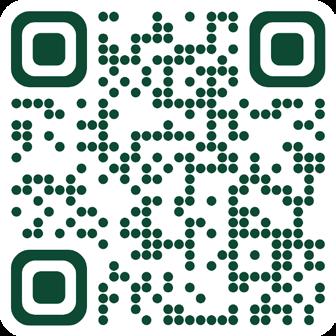
What did we learn from the data we collected on staff and students, how did it stack up against our thriving metrics, and what did we do about what we learned? Let’s unpack this.
AMERICAN SCHOOL OF BOMBAY • 9
SCAN TO VIEW THE WELL-BEING FRAMEWORK
BIG IDEA
STUDENT DATA
We start with the Key Performance Indicator Metric: All students reach indicators of thriving, and the institution responds with evidence-based strategies when they do not.
We drew from three sources for student data:
1. Wayfinder surveys in MS and HS Advisories
2. PASS surveys in ES
3. Attendance data
WAYFINDER is a well-known social and emotional learning curriculum, which comes with surveys that can be administered regularly to students to measure a number of things, and which we do through Middle and High School Advisories. Advisors (teachers) routinely looked at how their students were self-rating across different categories, allowing them to intervene (directly or through counselors) if responses were concerning. They also monitored responses across grade levels, allowing broader interventions (such as adjustments to curriculum). Based on the intuitive nature of the Wayfinder program, each student received direct feedback on areas of strength. They also received individualized lessons for areas of growth, which Advisors monitored progress.
For this report, we looked at three cohorts of students: Grades 6–8, Grades 9 and 10, and Grades 11 and 12. We looked at the Adaptability, Agency, and Healthy Habits categories, as these are skills that directly contribute to student well-being.
Healthy Habits That Contribute To Well-being
I engage in strength training activities.
I actively seek out activities that bring me joy and purpose. I actively try to incorporate a protein source into my diet.
I keep screens and other distractions out of my bedroom to improve sleep quality.
PASS (Pupils Attitude toward Self and School) is a wellknown social and emotional learning curriculum out of the United Kingdom; it is geared toward elementaryaged students. The surveys were administered once in the Fall to all students. Like Wayfinder, homeroom teachers looked at how their students were self-rating across different categories, allowing them to intervene (directly or through the ES counselor) if responses were concerning. They also monitored responses across their class and grade level, allowing broader interventions.
For this report, we developed two cohorts of students: PreK–Grade 1, and Grades 2–5. We looked at the first Factor: Feeling about school, as this was the well-being indicator for the instrument. The colors in the visualization below represent: Darkest = high satisfaction, Medium = moderate satisfaction, Lightest = low satisfaction.
Feeling About School
Grades 2–5
I actively try to incorporate a variety of fruits and vegetables into my diet.
I avoid or limit my intake of processed foods and sugary drinks.
.
I avoid sitting for more than
2
hours
PreK–Grade 1
I spend time reflecting on my personal goals and values.
a time. I actively work on building and maintaining positive relationships.
I make healthy choices and choose foods on their nutritional value.
at
I have strategies to cope with anxiety and/ or negative thoughts and feelings.
10 • IMPACT REPORT 2023–2024 / THE YEAR OF WELL-BEING
WAYFINDER DATA SUMMARY OF GRADES 6–12 RESPONSES (THE LARGER AND DARKER THE SPEECH BUBBLE, THE MORE THE STUDENTS AGREED WITH THE STATEMENT) LOW 1%
MODERATE 21% HIGH 78%
LOW 9% MODERATE 26% HIGH 65%
CONCLUSIONS
WAYFINDER Overall, ASB Middle and High School students are thriving according to the indicators of agency and adaptability (as well as the other categories of self-awareness, empathy, purpose, and collaboration). Some students’ ratings increased or decreased from the beginning of the year, but in the great majority of cases, the changes were not statistically significant. The data surfaced the need for a clear rubric and/or flowchart for Tier 2 and 3 interventions, which are specific instructional strategies that foster learning, growth, and health and are delivered through the school’s MultiTiered System of Support (MTSS) framework.
HIGH AGENCY & ADAPTABILITY IN SSC
HIGH SATISFACTION
PREK–12
PASS The great majority of the PreK–Grade 1 students were positive about their schooling, with some individuals ranking moderate to low satisfaction. Teachers were able to follow up with these individuals. For Grades 2–5 students, there exists a similar distribution to the younger cohort, with even greater distribution in the high satisfaction category. It’s important to keep in mind that the survey was a one-off exercise, and data may not be reliable for our youngest of learners. Teachers monitor feelings about school (and other items) each and every day.
I prioritize getting enough sleep to support my overall health. I take time for movement breaks after sitting for 30 minutes.
I drink at least one liter of water throughout the day to stay hydrated.
I regularly practice mindfulness or meditation to support my mental health.
I feel confident in my ability to communicate effectively with others.
I
feel connected to a community that creates a sense of belonging.
94% DAILY ATTENDANCE
PREK–12
ATTENDANCE 94% average daily attendance rate (PreK–12) for the first half of the school year, which is the pre-pandemic daily average. Rates at which students are sent home sick have also reverted to the school’s pre-pandemic levels.
OVERALL We can say with confidence that students across all grade levels are navigating school and its demands with a solid foundation of physical and emotional well-being, and good psychological health. That does not mean that all students have been exempt from at times needing significant support from the school, but those who have needed these interventions have generally managed to bounce back. ASB will continue to buttress its programs and staffing to include PE, counsellors, Advisory, and Co-curricular activities to meet the evolving well-being needs of its students.
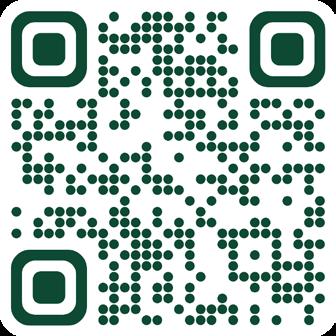
I find time for activities that mentally stimulate me and promote my personal growth.
I incorporate at least 30 minutes of movement into my day.
I practice gratitude or positive thinking on a regular basis. I know how to resolve conflicts in a healthy and constructive manner.
I include stretching as part of my exercise routine. I have a consistent bedtime routine that helps me unwind and prepare for sleep.
I seek out and maintain relationships that are supportive and positive.
I use relaxation techniques (like deep breathing, meditation, or yoga).
AMERICAN SCHOOL OF BOMBAY • 11
SCAN TO ACCESS THE ASB STRATEGIC AGENDA WEBSITE
STAFF DATA
We conducted a comprehensive flourishing survey for all staff, using research-based questions to measure attitudes and feelings across three categories: 1. Satisfaction, 2. Affect (mood), and 3. Flourishing (general psychological health).
In April, we facilitated through an external provider a “Health Fair”, where all ASB employees could get bloodwork and analysis at school.
CONCLUSIONS
Overall, our data points to multiple positive thriving indices, indicating high subjective well-being of ASB’s staff as a whole.
SATISFACTION
Cantril’s (1965) self-anchoring ladder produced a thriving rate (well-being that is strong, consistent, and progressing) among 77% of the staff.
Using the World Values Survey, and if ASB staff were a country, its “satisfaction with life” would be higher than all nations worldwide, except Canada and eight countries in Europe.
AFFECT/MOOD
Using the Scale of Positive and Negative Experiences (SPANE) to look at the overall mood of all staff, the instrument produced an affect balance score of 7.58, where -24 is unhappiest and +24 is happiest on the continuum.
SPANE’s positive feelings index produced a score 22.47, in the range of 6 (lowest) to 30 (highest). SPANE’s negative feelings index produced a score -14.90, in the range of -6 (lowest) to -30 (highest).
FLOURISHING
The subjective well-being questions that indicate general psychological health produced overwhelmingly positive results, with very few staff generating concern.
Some concern was noted about staff’s confidence in their long-term financial health, as well as in their physical condition and how it impacts their life.
Attendance rates for staff have reverted to pre-pandemic levels. This is a testament to our staff’s professionalism and commitment to their craft, and is remarkable given the lingering, well-documented psychological effects of the pandemic in workplaces that have returned to 100% in-person environments.
ON A SCALE FROM 0 TO 10, WHERE 10 IS THE BEST POSSIBLE AND 0 IS THE WORST POSSIBLE , WHERE DO YOU CURRENTLY STAND IN TERMS OF YOUR WORK SITUATION?
12 • IMPACT REPORT 2023–2024 / THE YEAR OF WELL-BEING
NO RESPONDANTS SELECTED 0–2 77% THRIVING
RATE
3–4 5–7
8–10
LOOKING AHEAD
Our commitment to well-being goes far beyond a “Year of” or even a Strategic Plan.
Paying attention to and cultivating wellness among community members will pay dividends in and out of the classrooms. Going forward into the new school year, we can commit to the following:
1) Deepening our commitment to the ASB Well-being Framework, allowing our interventions to the data we collect to mature, and be even more impactful.
2) Developing a Health Risk Assessment for adults, and a similar version for students, so that we head off a crisis before it presents itself.
3) Enhancing our partnership with ASB families, particularly in the area of parent education. This year, families had multiple opportunities to engage in workshops on parenting, mindfulness, and happiness. Topics included Active Parenting, Love and Logic, Mindfulness for Parents, and Happiness Habits for Parents. Since parent workshops re-started last year, more than 100 parents have participated, and interest continues to grow.
STUDENT PERSPECTIVES
“I’VE GROWN A LOT SINCE THE START OF THE YEAR.
At the beginning of the year I wanted every assignment on time without any gap. But then I would take on so much stress for that one assignment, maybe sit there for hours doing it.
Now, as I reflect, I’ve grown some because I can manage more than one assignment better.
I’m still working on it. It’s still a goal that I have.
PRITHVIRAJ, GRADE 7
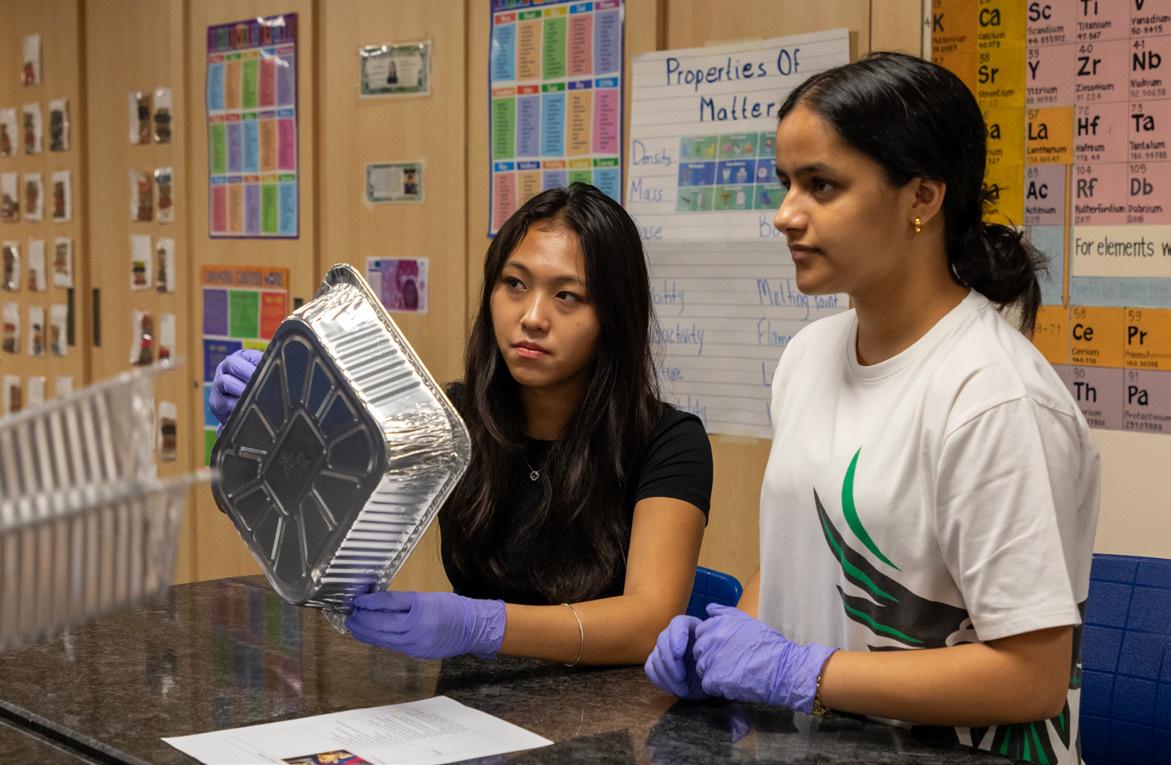
I THINK THAT IN THE REST OF THE WORLD, WELL-BEING IS NOT REALLY TALKED ABOUT, BUT ASB TAKES IT VERY SERIOUSLY.
They have events like SOLVE when you solved your wellbeing and they talk about mental health and well-being, especially in advisory, which is really helpful. The school talks about something that’s kind of brushed over by the rest of society, and this helps students help themselves become better people.
ARJUN, GRADE 8
AMERICAN SCHOOL OF BOMBAY • 13
”
“
AMERICAN SCHOOL OF BOMBAY • 14
STRATEGIC OBJECTIVE 2
DIVERSITY, EQUITY, INCLUSION AND JUSTICE
SUSTAIN AN INCLUSIVE, EQUITABLE, AND JUST SCHOOL AND PROFESSIONAL EXPERIENCE
In today’s interconnected world, embracing diversity, equity, inclusion, and justice (DEIJ) in education is more important than ever, especially in an international school setting. This work is crucial as it tackles deep-rooted inequalities, helps everyone feel like they belong, and boosts how well organizations perform by tapping into a variety of perspectives. By promoting DEIJ, we make sure everyone gets a fair chance at opportunities and resources, paving the way for a more just and equitable community. DEIJ isn’t just about policies; it’s about building a vibrant and inclusive community that
truly reflects the diverse world we live in. By weaving DEIJ principles into our curriculum, school culture, and everyday activities, our students grow into compassionate global citizens ready to make a positive impact. Our goal is to ensure that every member of our community feels a sense of belonging and has equitable access to opportunities. Focusing on DEIJ not only enhances learning but also supports the social and emotional growth of everyone in our community, ensuring everyone has the opportunity to thrive. Our commitment to DEIJ is at the heart of all that we do.
THE PROMISE This important pillar of the Strategic Agenda— Diversity, Equity, Inclusion, and Justice—contains the Promise: Every student will feel included and valued for who they are.
STRATEGY
Empowered by the institutional commitment to creating the type of climate and culture that our diverse community deserves, the DEIJ Task Force, led by ASB teachers Fay Martin and Mauricio Arevalo, have facilitated a myriad of projects toward this end:
Designing, and now implementing, a Conflict Resolution Framework centered on Restorative Practices.
Trainings for staff on the topic of gender, and several professional learning engagements with DEIJ themes.
Using consultants for student & staff listening sessions, and for institutional strategy.
Conducting Equity Audits in key operational areas.
AMERICAN SCHOOL OF BOMBAY • 15
STUDENT DATA
In looking at whether we are meeting our Promise, we turn to the Key Performance Indicator (KPI) Metric: All students see and experience ASB’s diversity as mutually beneficial for all community members.
Each week, Middle and High School students are surveyed through a number of Wayfinder questions, several of which contribute to an empathy score. Here are two data sets that represent cumulative weekly scores for each of the two divisions:
CONCLUSIONS
What can we learn from this formative data? We can see that empathy is strong as a whole across the Middle and High Schools, and that it dips slightly as the weeks go on, perhaps due to fatigue and stress.
We can use the Wayfinder data to provide additional programming via Advisory to build empathy. Because advisors also track individual students over time, they can refer students to their counselors for a deeper look into what might be going on, or they can intervene directly. This happens routinely and often.
SCHOOL Empathy Score
4.0/5
Both the Middle and High School and also the Elementary School data (via PASS) are not where we want them to be to measure our DEIJ Promise against our DEIJ Metric, so any findings and conclusions are premature. We will need to develop a better instrument going forward.
STAFF DATA
We have a better instrument to measure whether ASB staff feel included and valued for who they are. The data below shows a great majority of staff answer agree to strongly agree to the ASB Promise:
ASB STAFF Survey Response
“I FEEL LIKE I BELONG AT THIS SCHOOL.”
16 • IMPACT REPORT 2023–2024 / THE YEAR OF WELL-BEING
HIGH
WEEK 1 WEEK 5 WEEK 10 WEEK 15 WEEK 1 WEEK 5 WEEK 10 WEEK 15 0 1 2 3 4 5 6 7 40% 30% 20% 10% MIDDLE SCHOOL Empathy Score 3.8/5 STRONGLY AGREE
LOOKING AHEAD
It would be unacceptable to tolerate a single child or adult to not feel included in the ASB community, or valued for who they are as individuals. As a result, in the months and years to come, we will build upon our successes, learn from our mistakes, buttress our shortcomings, and put new stakes in the ground toward our institutional goal of sustaining an inclusive, equitable, and just school and professional experience. This will include:
Better alignment of student curriculum across all grades to DEIJ outcomes.
Greater attention to what makes a lasting difference in school climate and culture, such as hiring and HR processes and revising school policies through a DEIJ lens.
Developing better measures of DEIJ impact on community members. This will include the Action Research project that ASB committed to as part of its most recent Middle States Association accreditation.
Further staff trainings in various areas of DEIJ.
AS SOMEONE WHO REALLY ENJOYS COLLABORATING WITH MY PEERS AND SOMEONE WHO REALLY ENJOYS MEETING DIFFERENT PEOPLE AND
LEARNING
AND UNDERSTANDING NEW
PERSPECTIVES, I think ASB is a vibrant community with a lot of multinational children. Having classmates from various backgrounds in my grade and at the school allows me to interact with people who have perspectives that I would otherwise not have gotten to experience. And in the classroom, when it comes to your approaches to math or your approach to science, I think that students with various backgrounds and different ways they’ve been taught to approach certain aspects of learning really adds interest and helps me grow.
SAHIL, GRADE 11
STUDENT PERSPECTIVES
AT THE BEGINNING OF THE YEAR, YOU’RE ONE PERSON, BUT THEN AS THE END OF THE YEAR COMES, YOU’RE LIKE A COMPLETELY DIFFERENT PERSON.
Maybe you’ve changed something about yourself, maybe some things about you are still the same, but it’s not like you always do the same in things–you always change. It’s not like you’re gonna stay the same every day. And at ASB, that’s okay.
MAAHI,
GRADE 5
AMERICAN SCHOOL OF BOMBAY • 17
“ “ ”
18 • IMPACT REPORT 2023–2024 / THE YEAR OF WELL-BEING
STRATEGIC OBJECTIVE 3
PERSONALIZED LEARNING
CALIBRATE THE LEARNING EXPERIENCE TO MEET THE DYNAMIC NEEDS OF EACH INDIVIDUAL STUDENT.
At ASB, the unique interests, passions, and capabilities of every student are valued and celebrated. Teachers are dedicated to instructing through inquiry, building on the questions of children to provide opportunities for authentic engagement in robust and meaningful learning experiences at every grade level.
Nurturing environments in which every child can thrive academically, and be both challenged and supported to be their best, is fundamental to an ASB education. Our mission statement, and in particular our core value that all people have the potential for growth, elevates
our commitment to personalized learning as one of our Promises: Every student will meet their identified learning outcomes.
STRATEGY
Teaching and learning is our core business at ASB. We offer a holistic approach to education that helps students develop the knowledge, skills, and competencies they need to be successful today and in the future. As a part of our strategic focus on personalization, this year we have been particularly attentive to two initiatives.
1) DESIGNING AND MAPPING STUDENT GROWTH
One of our key metrics in the realm of personalization is to ensure that: All students perform at or beyond grade-level norms or individual learning support plan (ILSP) targets. It’s both bold to set this type of lofty target and extremely helpful in clarifying exactly what teachers set out to do each day in their classrooms.
We call on a number of metrics to measure and monitor student growth within and across each academic year. Most useful to teachers are the internal data they generate on a daily basis. In addition to observations and informal mechanisms for gauging comprehension, unit assessments, individualized proficiency measurements, approaches to learning (ATL) skill development, ILSP
goals, and semester-long performance inform the hundreds of instructional decisions teachers make each day to facilitate student learning.
External assessment data that comes from the Easy Curriculum Based Measurement (CBM) testing in Kindergarten through Grade 2, Measures of Academic Progress (MAP) testing in Grades 3 to 9, the Preliminary Scholastic Aptitude Test (PSAT) in Grades 10 and 11, and the Scholastic Aptitude Test (SAT) in Grades 11 and 12 all help teachers calibrate student achievement against international and like school norms, which informs our curriculum development and longitudinal planning.
AMERICAN SCHOOL OF BOMBAY • 19
Below, you can see an example of the kind of data generated through the MAP test. In this data set, teachers are able to look at the overall percentiles for students by grade level, and can also dig into the individual results for each child. This provides important information for teachers as they develop focus lessons, group students, and assess intended outcomes at the end of a chunk of learning.
GRADE 3
Assessments like the MAP are given multiple times within a year, so they provide teachers with insights into annual growth within an academic year, as well as how students are growing across grade levels.
Longitudinal data sets are often most useful at the level of program evaluation and review. Rather than informing instruction for a current cohort of students, these types of data help teachers and school leaders measure how
effectively the program as a whole caters to individual and collective student needs.
An important longitudinal data set we use at ASB is our 5-year IB Diploma examination results; these data help us ensure that our program is high quality, meets the needs of our learners, and ensures success in the most rigorous academic pathway available for an international school student to pursue.
The graph below shows ASB’s most recent five years of IB Diploma results. Students who attempt the full IB Diploma at ASB consistently outperform world averages on overall points earned and pass rates, underscoring the consistently high levels of achievement within our DP cohorts.
20 • IMPACT REPORT 2023–2024 / THE YEAR OF WELL-BEING
WINTER
GRADE 3 - 5 MATH DATA FOR
2023-2024
ASB DP RESULTS OVER TIME—2019 TO 2023
PERCENTILES KEY 1ST-20TH 21ST-40TH 41ST-60TH 61ST-80TH > 80TH 11 26 20 19 24 15 21 21 38 5 14 28 6 49 3 35 39 54 34 31.4 33 32 30 GLOBAL PASS RATE ASB AVG. POINTS 84% 93% 91% 2019 2020 2021 2022 2023 ASB PASS RATE GLOBAL AVG. POINTS 29.6 2019 34 2020 36 2021 34 2022 34 2023 77% 85% 89% 86% 79% 98% 95%
GRADE 4 GRADE 5
OUTCOMES
If we were to look at all of the various data sets from our internal, external and longitudinal data sources, we would find that the majority of ASB students perform at or above grade level in reading, writing, and mathematics. Our low student-to-teacher ratio and student support services programming provide interventions for
those approaching grade-level standards, helping them reach the individual learning goals articulated in their individual learning plans. These ILSPs give educators, students, and parents a shared understanding of the targeted growth areas for the child, helping them work in partnership toward their personalized goals.
2) CLARIFYING PERSONALIZATION
One of our priorities this year has been to make a commitment to being a more inclusive school. This does not simply mean that we review our approaches to admissions, rather it invites us to think more comprehensively about our programming and the extent to which it allows us to live our mission and “inspire all of our students to continuous inquiry, empowering them with the skills, courage, optimism, and integrity to pursue their dreams”.
At ASB, honoring learning diversity means that we develop and deliver programming that intervenes, scaffolds and extends learning experiences within and beyond the classroom. One area under review is our high ability programming, which we see as a tenet of an inclusive and personalized educational approach. We recognize the real needs of students who are performing beyond grade level and/or have been identified as gifted and talented, and the overarching review of personalization encompasses the ways in which we use data to set learning targets that extend the experiences of our most capable students.
To help us articulate how we want to approach personalization generally, and high ability specifically, we have undertaken a year-long program review. Through this review process, we recognized the need to strengthen our systems and structures in the following areas:
In the process of reviewing our programming, it became apparent that the practices and procedures, particularly in the area of high ability, were inconsistent at times across campuses and at transition points within the school. We found that on ocassion, programming can end up excluding some students by removing them from their peer groups at the expense of developing important approaches to learning skills, dispositions and competencies that are in many cases more foundational to long-term academic success than the content they are exploring at that time. Building common mental models about what it means to support high ability learners has been identified as a key priority for the coming year, and during the 2024-2025 academic year, we will be continuing with this focus on bridging into a program model that meets the needs of these students and is also inclusive in its approach to expanding opportunity and providing rigor and challenge.
CONNECTING OUR GUIDING STATEMENTS TO OUR DAILY PRACTICES
DEFINING ROLES AND RESPONSIBILITIES FOR ALL EDUCATORS IN DELIVERING PERSONALIZED LEARNING EXPERIENCES
ESTABLISHING SHARED THROUGH-SCHOOL TERMINOLOGY AND CONSISTENT APPROACHES
DOCUMENTING PROCESSES AND PROCEDURES THAT TEACHERS USE TO
EFFECTIVELY MEET THE NEEDS OF EVERY STUDENT IN THEIR CLASSROOMS
CONSULTING EXTERNAL DRIVERS SUCH AS INTERNATIONAL BACCALAUREATE PROGRAM REQUIREMENTS AND TESTING PRACTICES
AMERICAN SCHOOL OF BOMBAY • 21
OUTCOMES
One result of the review has been the completion of a whole school access and inclusion guide. This guide will ensure that the processes and practices that we follow support the beliefs and values that we hold about personalized learning at ASB. In particular, the guide will help us become more accountable to ensuring consistency and continuity within the domains of student support services including individualized learner support (ILS), English as an additional language (EAL), high ability (HA) and counseling from PreK to Grade 12. A huge thanks to Beth Robertson, our Student Support Services Coordinator, and our learning coaches and counseling teams who, in consultation with lead educators in the world of inclusive education in international schools, have delivered this important anchor document that will steer our work in service to students in the years ahead.
CONCLUSIONS
ASB’s commitment to serving a diverse range of learners is strong, and we continue to strive to foster learning environments in which every child feels appropriately challenged and authentically engaged.
As we look ahead to the implementation of the access and inclusion guide, we recognize that we also can review and revisit practices that relate to supporting all learners at ASB. We will continue to strengthen alignment at key transition points for students (ex: ES to MS and MS to HS) as well as broaden pathway offerings to better meet a wide range of student capabilities, needs, and interests. And, expanding our use of data will help us make increasingly effective in-the-moment instructional decisions and longitudinal curriculum refinements.
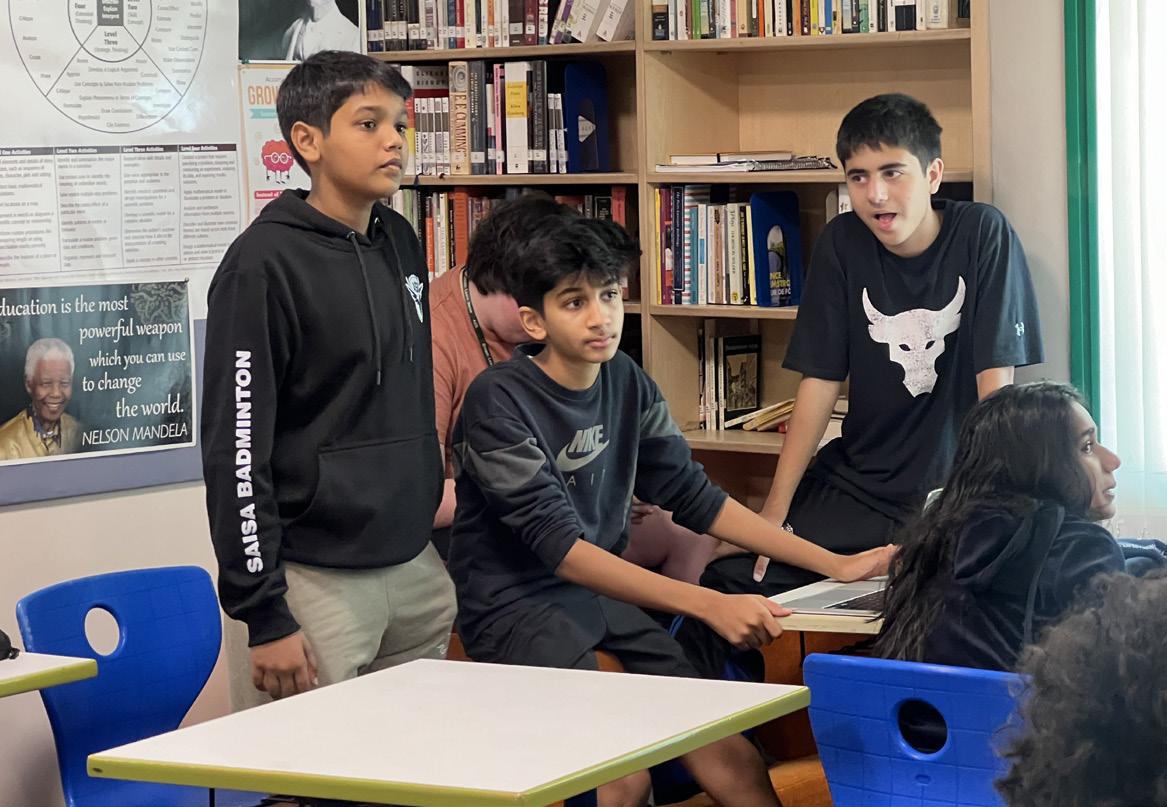
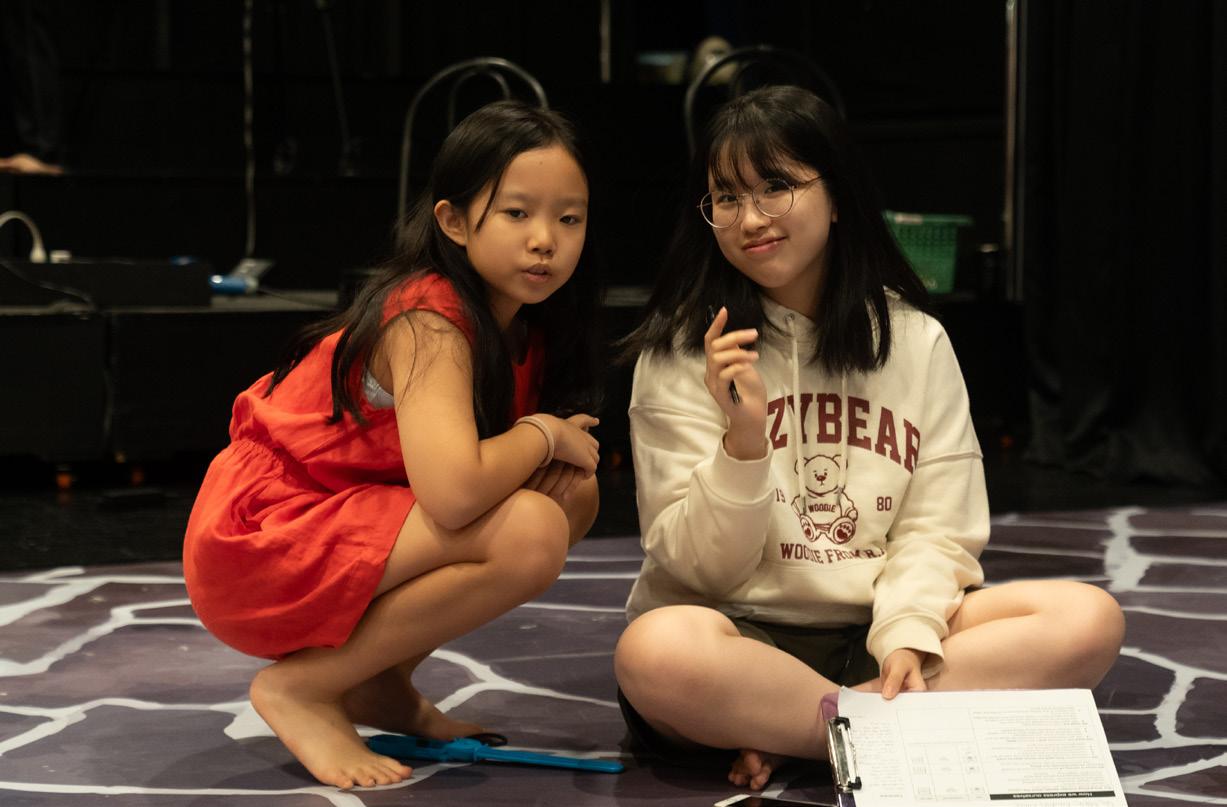
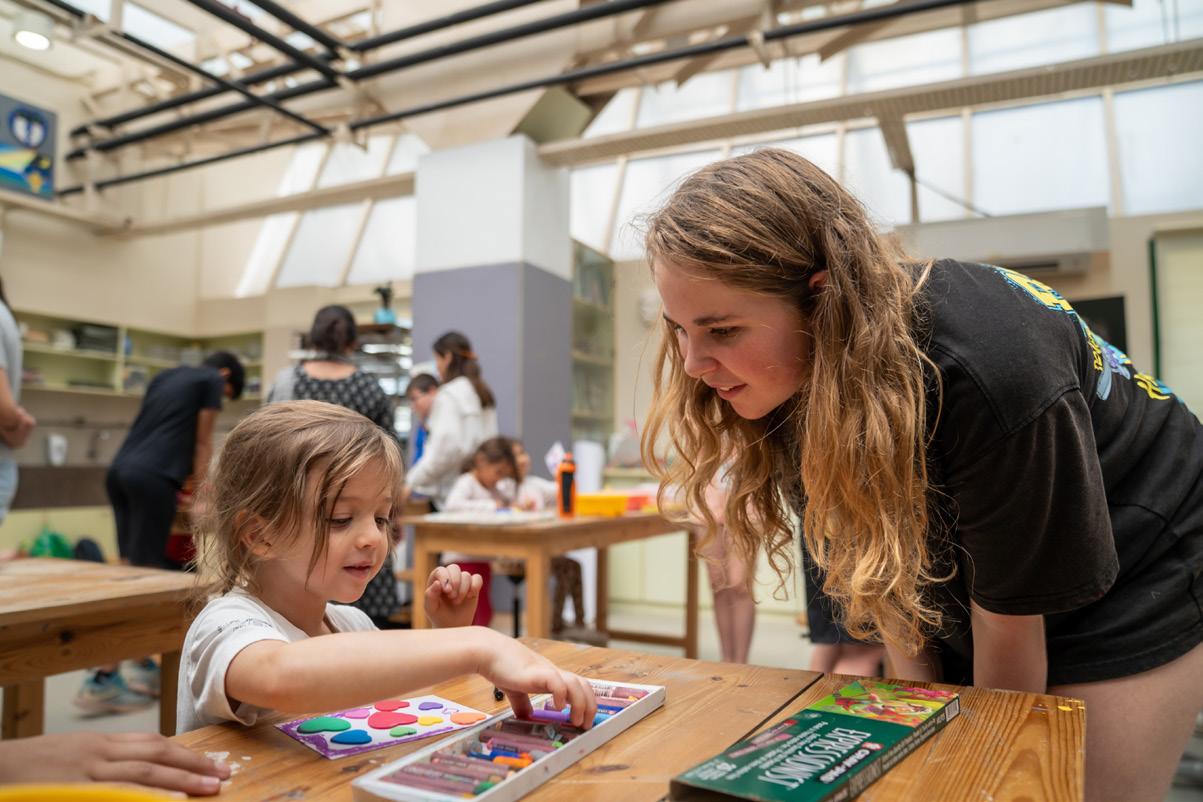
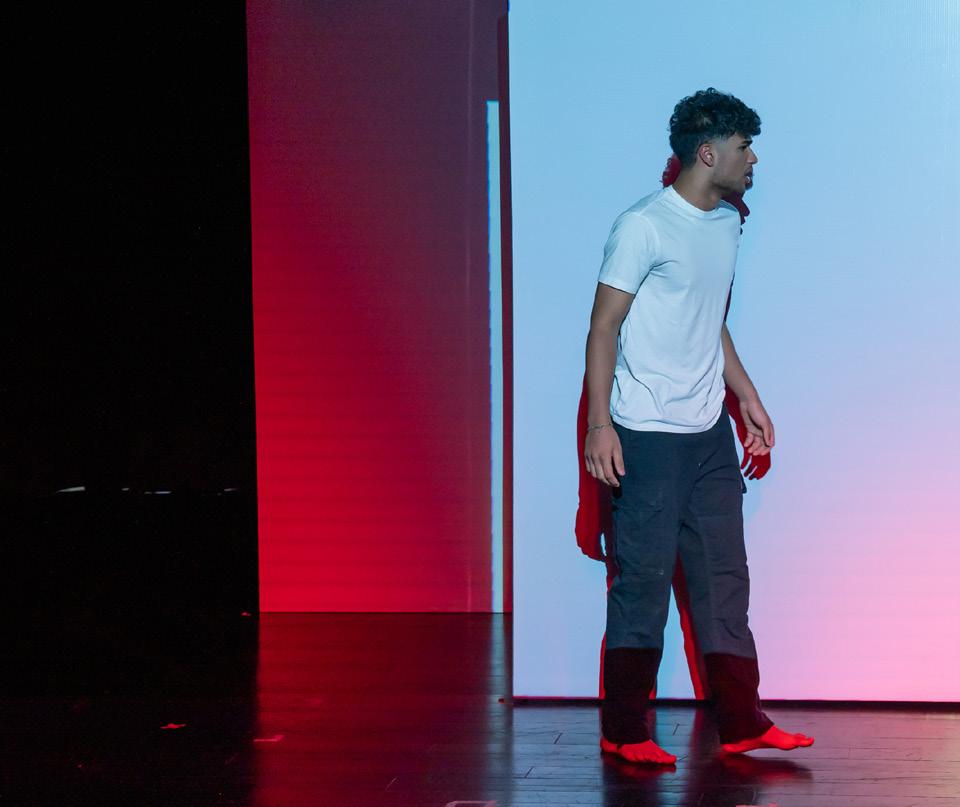
22 • IMPACT REPORT 2023–2024 / THE YEAR OF WELL-BEING
LOOKING AHEAD
In continuing to develop and enhance our approaches to personalization, we are prioritizing two key areas for ongoing attention: the collection of observational data and performance data. Each holds a critical role in supporting teachers to design and deliver instruction that challenges every child and empowers them to thrive as learners at ASB.
Observational data collection priorities will include teams of teachers regularly looking at classroom-generated data; processes and practices for the analysis of academic performance data and developing action steps; the ways in which teachers track and respond to inconsistencies or anomalies in student progress;
processes and practices for students PreK to Grade 12 to self-reflect and report on their own academic growth; and the role of student voice in teacher-parent-student conferences and other exhibitions of learning.
Performance data collection priorities will include introducing systems for collecting and analyzing both internal and external attainment and growth data and articulating clear action steps for different scenarios; the proactive gathering of data on students regularly performing above or below grade level and knowing when/if/how to intervene; and clear processes for further exploring a child’s needs to ensure that they are being appropriately challenged in all areas.
“
PERSONALLY, I’VE NOTICED ASB’S
CONSTANT EFFORTS TOWARDS CUSTOMISED LEARNING PATHS FOR STUDENTS OF DIFFERENT ABILITIES, ENRICHMENT PROGRAMS, AND MORE.
A wide range of opportunities are present for any student, whether this is a leadership role on the ASB Newspaper, assistant coach of ASIAC and SAISA sports, STUCO member, being a part of the athletics team council, etc. These are ways ASB helps students like me build on my passions as a learner.
ANIKA, GRADE 9

“STUDENT PERSPECTIVES
I THINK THAT BECAUSE I JOINED THE ASB SO YOUNG IN GRADE 4, A LOT OF MY STRENGTHS ARE PRODUCTS OF ASB, SPECIFICALLY THINGS LIKE MY STRENGTHS IN ANALYTICAL THINKING.
I’ve been able to succeed in Science classes, Math classes, English classes because of it. Everything we learn sort of involves an aspect of critical thinking, and ever since Elementary School, and Middle School to now High School, I think ASB’s really instilled those in me. Sort of approaches to learning and of course the point that you’re able to succeed in whatever subject you really don’t.
AKBAR, GRADE 11
AMERICAN SCHOOL OF BOMBAY • 23
24 • IMPACT REPORT 2023–2024 / THE YEAR OF WELL-BEING
STRATEGIC OBJECTIVE 4
STUDENT VOICE
EMPOWER STUDENTS TO DRIVE AND CO-CREATE KEY ASPECTS OF THEIR LEARNING EXPERIENCE
STRATEGY
At the center of our purpose as a school is our commitment to our students. Our priorities, decisions and actions emanate from our Mission, which articulates how we intend to serve the childen of ASB. As a part of our holistic education, we inspire students to learn knowledge, skills, dispositions and competencies for a whole
host of outcomes, one of which is to become positive changemakers. This helps us work towards the following Promise: Every student will know and understand their profile as a learner, and be able to influence their school experience.
1) SOLVE @ASB
Inspired by the SOLVE model that originated at the Massachusetts Institute of Technology (MIT), SOLVE@ ASB uses a design thinking framework within which students develop voice and exercise choice. In March 2024, students collaboratively considered a problem and identified possible solutions that will be implemented in the coming academic year. The outcome was for students to innovate, connect, and spread joy through this creative approach.
THE DESIGN THINKING FRAMEWORK
For each SOLVE@ASB experience, students engage with a design thinking process that helps them explore an issue or topic.
EMPATHIZE In this stage, students seek to understand the user: what are their needs, challenges and goals towards the guiding question?
DEFINE In this stage, students bring the challenge(s) into focus by reviewing the information gathered above and identifying a key focus.
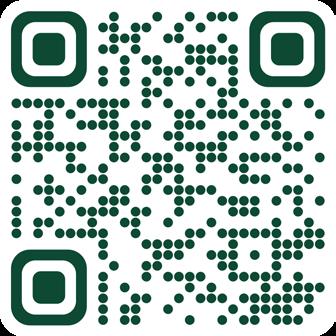
IDEATE In this stage, the students document ideas they have developed that may solve their challenge statements. Students want to generate a volume and variety of possible solutions, not worrying about whether the ideas are good or bad. They are encouraged to think of lots of different ideas before deciding which one to use.
PROTOTYPE In this stage, students develop a goal that conveys their challenge statement and the solution they have designed to solve it. This stage generally results in a system, process, or product.
TEST In this stage, students test the viability of their solution. This stage varies based on the type of prototype or goal that was created.
AMERICAN SCHOOL OF BOMBAY • 25
SCAN TO LAUNCH THE SOLVE WEBSITE
ELEMENTARY SCHOOL SOLVE
Led by students in Grades 4 and 5, the entire Elementary School community of learners embarked upon SOLVE 3.0: Solve for SELF by responding to the guiding question: In what ways might we make classroom spaces more comfortable and promote well-being?
Over multiple days, students came together and considered learning environments across the ES Campus: indoor and outdoor, generalist and specialist, spaces catering to large groups and ones catering to smaller groups of children. Through a comprehensive process of idea generation and exploration, a wide range of possible enhancements were identified, including:
DIVERSE PLAYGROUND EQUIPMENT: EXPANDING OUR PLAY OPTIONS CALMING AREAS: CREATING THOUGHTFULLY DESIGNED SPACES FOR
TRANQUILITY
CLASS PETS TO CALM: INTRODUCING SERENE FISH TANKS ON ALL FLOORS.
SECONDARY SCHOOL SOLVE
Work is already underway to bring these student-led initiatives to life, transforming creative concepts and innovative ideas into reality.

This year, our Secondary School students participated in SOLVE 3.0: Empowering well-being through design thinking. This version of SOLVE dove deep into wellness, with students at the helm of their well-being journeys. They took the lead in crafting their own paths to health and wellbeing through various planned activities that took place across the day, in order to answer the question: How might we begin to understand ourselves and what we need?
SOLVE 3.0 EMPOWERING WELL-BEING
Students identified their well-being needs and were able to select from almost 40 offerings in the following categories: Mind & Spirit, Movement, Nutrition, Relational, and Stress & Sleep. As a follow-up to these engagements, students spent the next month tracking their success towards their well-being targets.
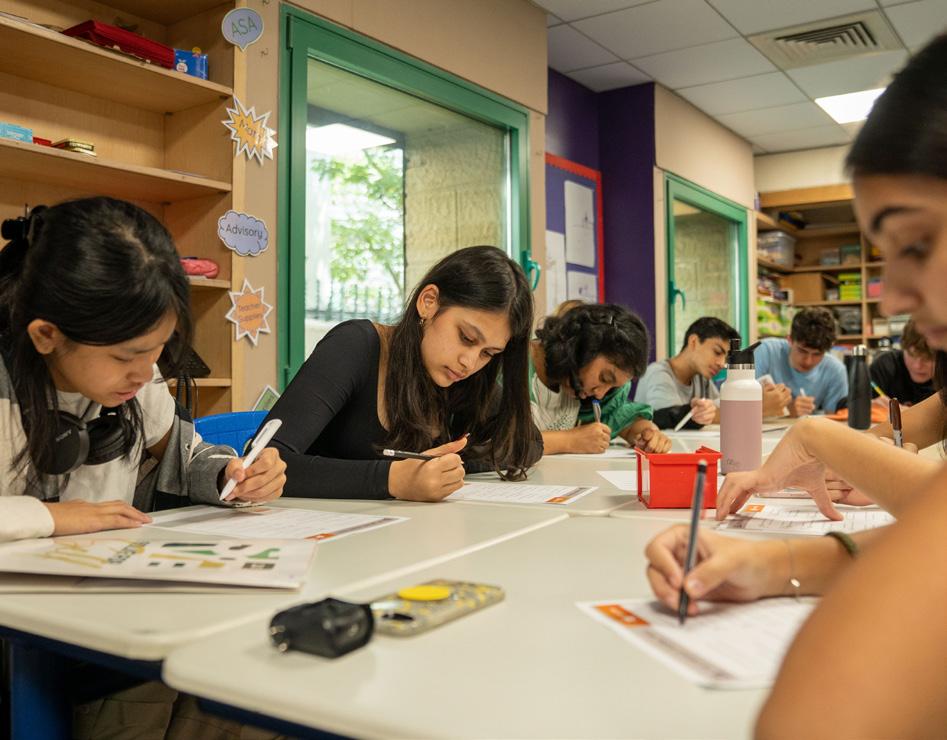
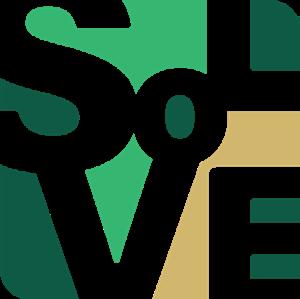
OUTCOMES
So why is SOLVE@ASB fundamental to student learning at ASB? We know that the concepts of ‘voice’ and ‘choice’ are ones easy to say and more important to live. In particular, this is because we recognize that voice and choice are critical outputs of a high-quality education. By explicitly teaching the design thinking framework, we are giving students a chance to authentically express their voice and exercise choice toward meaningful and personally relevant issues.
26 • IMPACT REPORT 2023–2024 / THE YEAR OF WELL-BEING
SOLVE 3.0 IN THE ELEMENTARY SCHOOL
SOLVE 3.0 IN THE SECONDARY SCHOOL
1 23
2) STUDENT-DRIVEN PROCEDURES AND PRACTICES
The systems and structures set out in schools often seem as if they are being done to, rather than being done with, students. This can be particularly challenging when students know the stakes are high, and that these procedures will have a direct impact on them today and in the future.
Following on from last year’s successful student-crafted clothing guidelines that are now a part of the Secondary School Handbook, this year the students identified a desire to shape the academic integrity guidelines that are one of the required documents by the International Baccalaureate. A group of committed students, teachers and leadership team members collaboratively explored issues related to academic integrity, including the use of artificial intelligence, adherence to deadlines and course requirements, and the line between collaboration and collusion. Through a structured process, all voices at the table were valued and elevated, ensuring balanced participation between students and adults.
LOOKING AHEAD
Knowing just how essential the cultivation of voice and the opportunity for choice are to a rigorous and futurefocused education, we are committed to both expanding and enhancing how students influence their learning experiences at ASB. As we look ahead to next year and beyond, we will endeavor to:
Use design thinking as a framework to promote critical thinking, creativity, and collaboration for all students
Bring students to the table to work as equals with their teachers and school leaders to continue shaping studentcentered processes and procedures
Embed learning experiences in personally relevant and authentic contexts that invite students to be positive changemakers for their communities
OUTCOMES
STUDENTS
SHAPING KEY DOCUMENTS
When given the chance to shape this sort of key document, students flourished. This is an issue important to them, and they were committed to creating a set of guidelines that would serve them and their peers now and in the years ahead. They understood the importance of clear and consistent expectations, both in writing and in practice, and took the lead in advocating around new challenges, such as the role of AI in student assessment. The publication of revised academic integrity guidelines for the 2024-2025 school year will be supplemented by instruction and reflection about how to adhere to these guidelines in what can be an increasingly competitive and stressful environment.
STUDENT VOICE IS IMPORTANT BECAUSE IT’S STUDENTS’ POINTS OF VIEW AND HOW THEY GET TO SHARE IT. AND ASB DEFINITELY ENCOURAGES
THIS. I can just see it just walking down the hallways because in all the videos students are talking and at all the assemblies students are leading and sharing. I also see it in the classroom, if I use my voice to tell the teacher I’m struggling with this or that, it gets fixed and they help me know what to do to make me understand better.
ANDOVAN, GRADE 6
AMERICAN SCHOOL OF BOMBAY • 27
“ ” STUDENT PERSPECTIVE
28 • IMPACT REPORT 2023–2024 / THE YEAR OF WELL-BEING
STRATEGIC OBJECTIVE 5
HOST COUNTRY CONNECTIONS
ESTABLISH AUTHENTIC CONNECTIONS BETWEEN THE SCHOOL AND OUR HOST-COUNTRY.
ASB sees its diversity (of nationalities, cultures, experiences, personal identifiers, etc.) as a distinct strength and value-add to the learning program. It also recognizes the special opportunity being located in the vibrant city of Mumbai and country of India provides to enhance and deepen the learning experience of its community.
Connecting authentically with our host country is far more than an opportunity. We see this as a requirement in order to deliver on the school’s mission of continuous
inquiry and enhancing the lives of others. Enough so to make it one of our Promises: Every student will engage authentically with our host-country.
STRATEGY
ASB’s current program and curriculum already offer a myriad of scaffolded opportunities to engage with India and its cultures. However, we desire to do more. Two strategies in particular have received attention in the Strategic Agenda, which build upon existing strengths.
1) INDIA SANSKRITI CENTER
The India Sanskriti Center (ISC) launched in April at the Elementary School Campus. Prior to the launch, ISC Curator Sananda Mukhopadhyaya shared the following about this important strategic initiative:
As the India Sanskriti Center evolves from an idea into a physical space with school-wide programming, we are filled with a profound sense of connection and purpose. Embedded within the strategic fabric of the school, the India Sanskriti Center is committed to fostering authentic connections with our host country.
Nestled in the heart of the Elementary School Campus, the Center’s first physical space will be a platform for dialogue, discovery, and engagement with Indian culture. From vibrant exhibitions to immersive workshops, captivating performances, and thought-provoking documentaries, the center will facilitate diverse activities for
students, faculty, and the parent community. There will be an emphasis on being inviting and inclusive ensuring that every community member feels welcome to explore and learn.
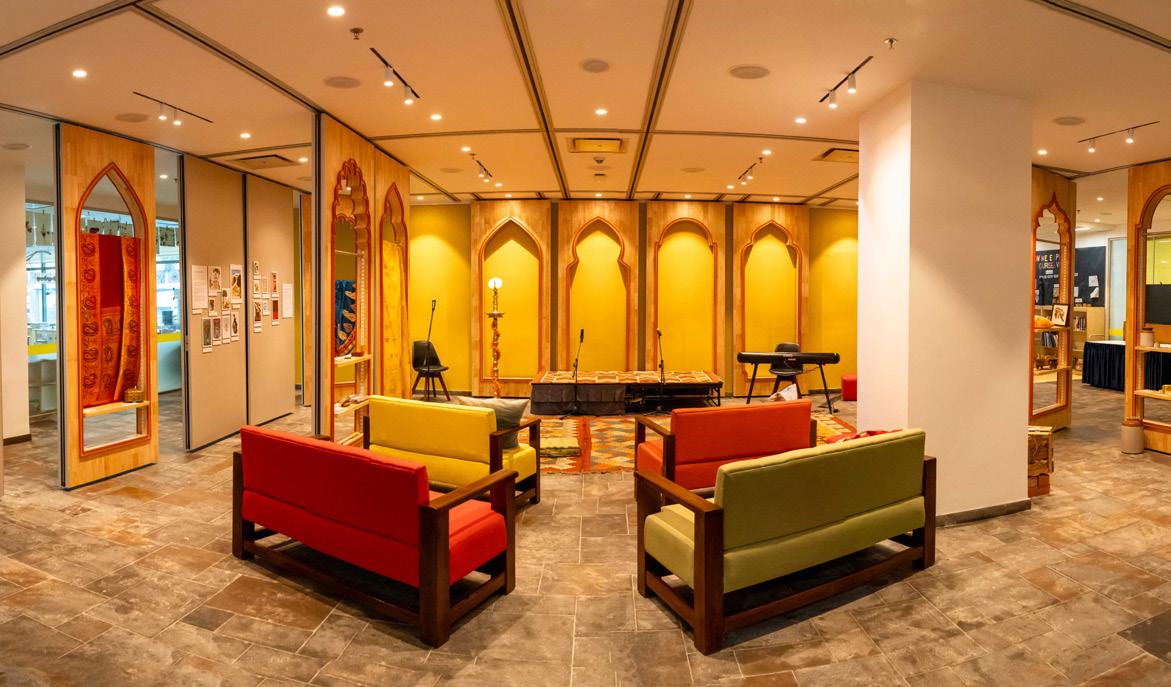
AMERICAN SCHOOL OF BOMBAY • 29
2) COMMUNITY AND SOCIAL RESPONSIBILITY
ASB’s Community and Social Responsibility (CSR) program is situated within ASB’s mission and core values. It aims at creating sustainable and authentic service-based experiences for students in order for them to:
Build a strong sense of community and connection at ASB and with the world outside.
Build a greater awareness of social and environmental causes / challenges.
Develop agency, skills, and attitudes to create positive change through transformative citizenship and service.
STUDENT DATA
In looking at whether we are meeting our Promise, we turn to the Key Performance Indicator Metric: All students participate in cultural enrichment experiences, and many students also engage in immersive (deeper) cultural experiences.
The Elementary School, while engaging in CSR activities at each grade, has not yet established a formal program like the one that exists on the BKC campus.
Participation rates at the Middle School are nearly 100%, since CSR is a requirement.
At the High School, CSR participation is strong and is predominantly student-led.
CSR Coordinator Seema Kamble, as part of an intentional program review, mobilized a group to develop a three-year strategic plan for CSR:
YEAR 1: SY 2024–2025
Laying the foundations for collective understanding and strengthening the existing CSR program
YEAR 2: SY 2025–2026
Diversifying CSR opportunities and building deeper and broader engagements
YEAR 3: SY 2026–2027
Integrating CSR into the curriculum
CONCLUSIONS
CSR offers a diversity of options, and participation is strong. We recognize the need to be more intentional with CSR in the Elementary School, foster greater participation in the High School, and most importantly, measure the impact of CSR (both on our students, and on our partners). In doing so, we’ll better be able to meet the Promise of authentic engagement with our host country.
We also see the need to better align Week Without Walls and Yatra trips to this Promise, and will work to do so. As the India Sanskriti Center finds its feet, it will begin to complement and supplement CSR programming and goals. In its own right, the ISC will actively contribute to authentic host-country engagement.
BASED ON INTERVIEW, FOCUS GROUP, AND SURVEY DATA GENERATED THROUGH THE CSR REVIEW PROCESS, THE FOLLOWING STRENGTHS AND CHALLENGES WERE IDENTIFIED:
How we might continue to…
FOSTER LEARNING AND GROWTH
BUILD COMMUNITY AND CONNECTIONS
EMPOWER STUDENT LEADERSHIP
ENHANCE THE LIVES OF EACH OTHER
PROVIDE ACCESS TO RESOURCES AND OPPORTUNITIES
CREATE MEANINGFUL AND JOYFUL EXPERIENCES FOR ALL
How we might futher…
INTEGRATE CSR INTO BOTH CO-CURRICULAR OFFERINGS AND CURRICULUM UNITS
INCREASE STUDENT PARTICIPATION
DEVELOP SKILLS AND STRUCTURES TO SUPPORT AUTHENTIC COMMUNICATION AND CONNECTION
INTRODUCE A MORE DIVERSE RANGE OF CSR ENGAGEMENTS EXPAND PARENT AND COMMUNITY CSR PARTICIPATION
30 • IMPACT REPORT 2023–2024 / THE YEAR OF WELL-BEING
STRENGTHS CHALLENGES


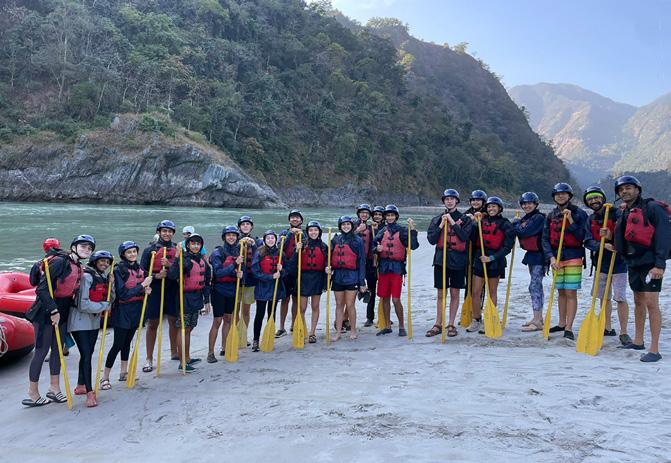


15 SERVICE AND ADVENTURE TRIPS

LOOKING AHEAD
With the program review behind it, CSR will begin implementing its improvements. As the plans for the upcoming academic year take shape, collaboration becomes paramount—both within the school and with local partners. Over the coming months, the India Sanskriti Center will delve into the rich tapestry of Indian textiles, music, and community celebrations. Middle and High School students will immerse themselves in the melodies of Indian cinema and classical traditions. At the same time, parents will have the chance to interact with artisans, exploring India’s rich weaving traditions firsthand. Furthermore, efforts to engage with the broader city community through the lens of social and environmental responsibility are underway, ensuring our commitment to the local context.
AMERICAN SCHOOL OF BOMBAY • 31
KERALA SERVICE
TIBET IN INDIA
ART & ARCHITECTURE
RAFTING IN THE HIMALAYAS
ASB TEACHERS ARE ALWAYS WILLING TO HELP. When I’ve had a lot going on, my teachers have noticed and checked on me. There are also a lot of teachers who are there to listen and I’m able to share anything with them…I think that a lot of ASB teachers in general have that kind of relationship because they’re able to connect with the students really well. —ARHAN, GRADE 8
”
At ASB, we intend to develop a professional culture in which the learning experiences we provide to adults foster self-directedness, have personal relevance, support the school mission and strategic agenda, and prioritize both outcomes and processes.
Balancing personal needs and institutional needs is an important consideration when planning for professional learning. The design of learning experiences and the gathering of data about levels of success need to be mission-aligned, support the strategic priorities of the school, and consider outcomes and processes most relevant to each team and/or individual.
To help us set priorities and measure progress, we have identified 3 types of professional learning experiences that drive our approach to adult learning.
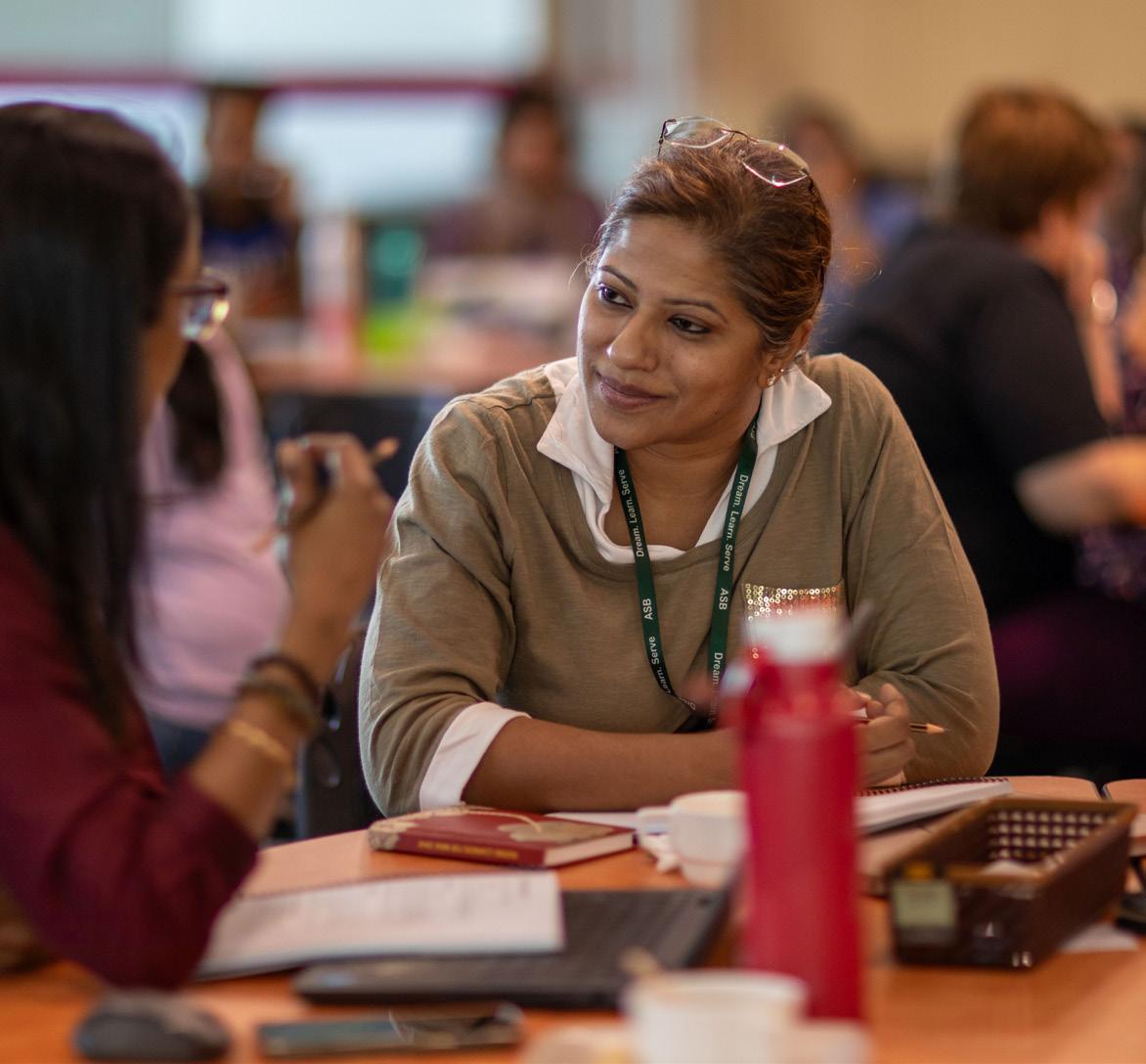
1) JOB-EMBEDDED PROFESSIONAL LEARNING EXPERIENCES are at the core of our collaborative structures and practices. We believe that each professional conversation we engage in provides a chance to grow for all those involved. When they come together, teams and departments set task priorities as well as identify areas for collective growth, ensuring that they maximize their capacity to write curriculum, develop assessment processes, refine instructional approaches, and become more effective collaborators. We strive for an environment of professional excellence, in which staff can measure and celebrate the ways in which they are growing through their day-to-day work. This year, job-embedded professional development experiences have included:
Building collaborative skills, systems, and practices
Refining curriculum, assessment, and instructional practices aligned to IB PYP and IB DP reauthorization
Innovating through the use of AI and new technologies
2) PROGRAMMATIC AND STRATEGIC PROFESSIONAL LEARNING EXPERIENCES ensure we can operationalize how we implement our mission at the classroom level. By using our big-picture priorities to frame learning experiences for staff, we can translate our long-term aspirations into actions that impact our students today. We look for school-wide links and points of connection, mapping out and supporting staff development through the work of consultants, task force and action team working groups, and targeted learning experiences that support institutional priorities essential to our identity. This year, programmatic and strategic professional development experiences have included:
Elevating DEIJ systems, structures, and mindsets
Developing PreK–12 mathematics, science, language acquisition, and personalization programs
Becoming adaptive and agile as an organization
32 • IMPACT REPORT 2023–2024 / THE YEAR OF WELL-BEING
“
ADAPTIVE SCHOOLS FOUNDATION WORKSHOP
PROFESSIONAL LEARNING
3) SELF-SELECTED AND SPECIALIZED PROFES -
SIONAL LEARNING EXPERIENCES empower staff to develop personalized capabilities that attune to their individual learning journeys. These experiences build on the strengths of educators and support them in working towards the professional goals they have set for the year. We are committed to ensuring that every employee has the opportunity to become more skilled in current best practices related to their role and responsibilities at ASB, and support a wide range of learning experiences that promote action, reflection, and growth.
This year, the self-selected and specialized professional learning experiences have included:
Staff participation in nearly 300 individual professional learning experiences in areas such as wellbeing, safeguarding, coaching, leadership development, conflict resolution, and analyzing and using data
Organizations staff have engaged with include AAIE, NESA, IB, PTC, ISTE, AIELOC, SENIA, NFI, TESOL, longstanding leaders in the realm of professional development and adult learning
Over 80 staff members completed the Adaptive Schools Foundation Course, a core framework for cultivating agility and fostering collaborative practices within our dynamic educational setting
Staff presented at workshops and conferences globally, as well as welcoming colleagues from around the world to events hosted by ASB
UN-PLUGGED 2024— Leveraging our innovative mindsets and harnessing our human capabilities
This year we welcomed the return of one of ASB’s hallmark professional development events, the ASB Un-plugged Conference. This was the seventh iteration of the conference during which over 100 global educators, along with our own ASB staff, engaged in keynotes, hands-on learning institutes, and teacher presenter workshops that explored how we might leverage innovative mindsets and harness our human capabilities.

Across the six conference strands, participants connected to the mission, vision and values of ASB, reiterating how essential our organizational identity is to the types of professional conversations we foster. Designed to stimulate meaningful dialogue during the event as well as foster connections to continue building future-focused learning environments long after the conference ends, Un-Plugged also gave ASB staff an opportunity to showcase how they are engaging with topics important to like-minded colleagues working in international schools around the world.
AMERICAN SCHOOL OF BOMBAY • 33
SCAN FOR CONFERENCE HIGHLIGHTS 1. ARTIFICIAL INTELLIGENCE 2. DESIGN THINKING 3. EMPOWERING OUR STUDENTS 4. CENTERING DEIJ 5. WELLNESS AT THE HEART 6. LEVERAGING COMMUNICATION THROUGH COACHING
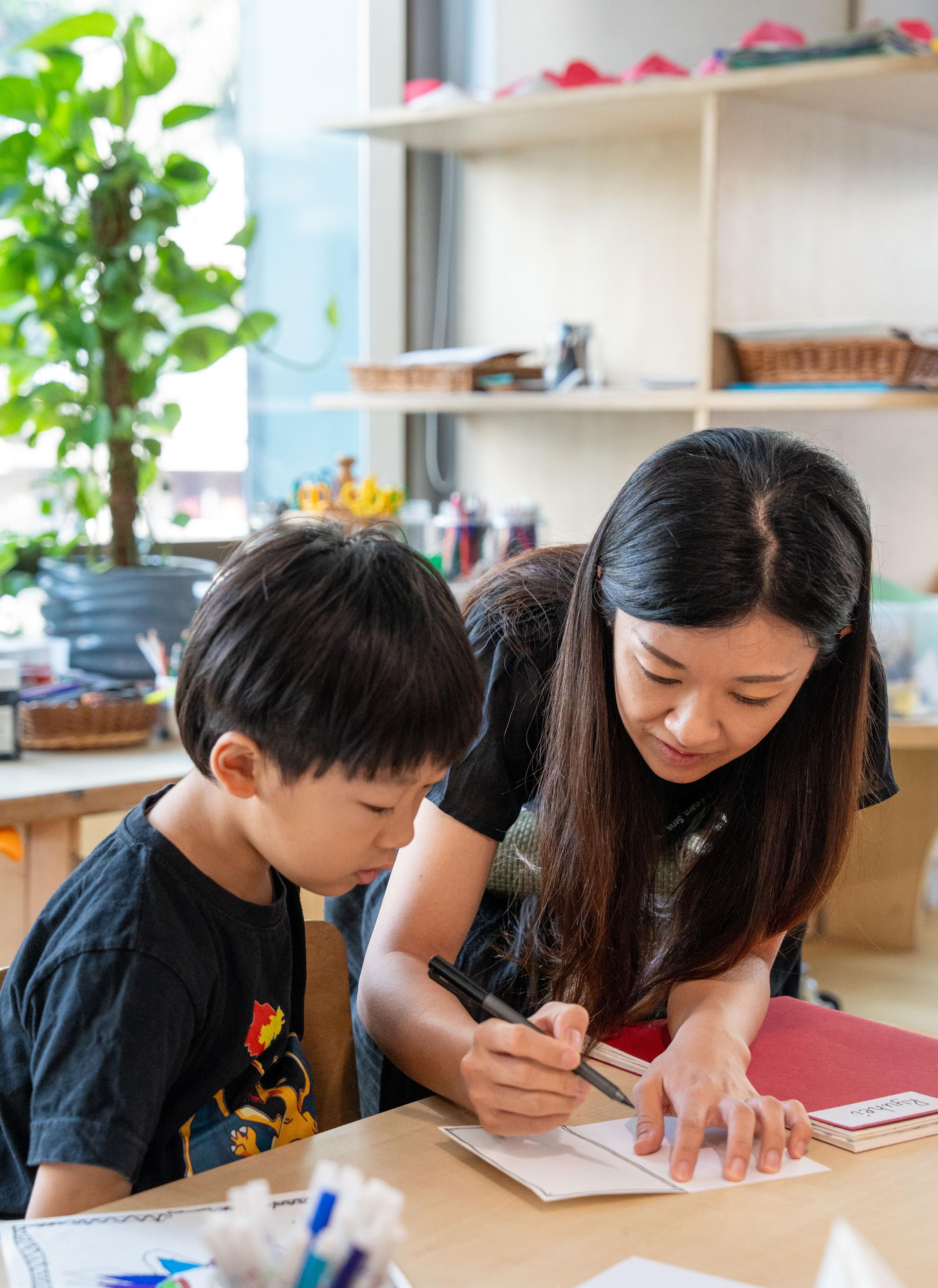
“ AS A PARENT, I FEEL INCREDIBLY GRATEFUL TO BE PART OF THE ASB COMMUNITY. IT IS A WARM, INCLUSIVE, AND DIVERSE ENVIRONMENT THAT VALUES EVERY CHILD’S UNIQUE STRENGTHS AND BACKGROUND.
The collaborative spirit among students, parents, and educators fosters a sense of belonging and mutual support. I appreciate the school’s commitment to innovation and personal growth, which helps our children develop into well-rounded individuals. The ASB community truly feels like a second family, providing both our children and us with a supportive and enriching experience.
”
NATASHA PINTO, PARENT
PARENT COMMUNITY
For the first time in a few years, we reached out to our community with a general satisfaction survey. The questions ranged from the academic to the social-emotional experience, from co-curricular programs to communication. The data gathered allows the leadership team to make adjustments to what gets its attention and resulting actions. Though the response rate fell short of historical numbers, and thus made the data statistically unreliable, we can nevertheless glean some useful insights.
Analyzing the comments from the parent satisfaction survey across various grade levels reveals insights into parental expectations, concerns, and areas of suggested improvement for the school. The comments touch on various aspects, including academic rigor, personalized learning, communication with parents, inclusion of local culture and languages, outdoor and extracurricular activities, and the emotional well-being of students. Here’s a collated analysis based on key themes that emerged.
WHEN WE ASKED PARENTS, “WHAT IS ONE ASPECT YOU WOULD CHANGE ABOUT ASB?” AI PRODUCED THE FOLLOWING SUMMARY FROM THEIR RESPONSES.
ACADEMIC FOCUS AND RIGOR
• Personalized Learning: Across grade levels, there’s a strong call for more personalized or individualized learning approaches.
• Academic Rigor: Several parents expressed concerns about the perceived lack of academic rigor and depth, noting that their children might not be well-prepared for future educational transitions, particularly when moving to schools in other countries or higher grades within the same system.
• STEM and Language Programs: There’s a repeated request for stronger emphasis on STEM (Science, Technology, Engineering, Mathematics) as a regular part of the curriculum and for improvements in world language programs, especially French.
COMMUNICATION AND SUPPORT
• Feedback and Communication: Parents seek more frequent and detailed feedback on their children’s progress, including direct communication from teachers and access to assessments beyond standard tests like MAP.
• Support for Learning: There’s a notable concern about the need for additional support in subjects where students struggle, both in school and with resources for home learning.
EXTRACURRICULAR ACTIVITIES AND EXPOSURE
• Outdoor and Real-world Learning: Parents suggest increasing outdoor activities, field trips, and realworld exposure to enhance learning experiences and personal growth.
• Cultural and Local Inclusion: The desire for a more inclusive environment that represents local culture and demographics is evident, with suggestions for incorporating local history, culture, and more local Indian students in the classroom mix.
EMOTIONAL AND SOCIAL WELL-BEING
• Emotional Support and Social Integration: Emotional growth and well-being are highlighted as crucial, with parents appreciating efforts to support students’ social and emotional development. However, there are calls for more proactive measures to help new or transitioning students integrate and bond with peers.

AMERICAN SCHOOL OF BOMBAY • 35
The feedback from parents on ASB’s higher purpose reflects a broad and nuanced understanding of the school’s role beyond providing an outstanding education. Parents view ASB not just as an educational institution but as a community and a platform for holistic development, emphasizing the importance of fostering well-rounded individuals prepared to make meaningful contributions to the world. Below is a synthesis of the core themes.
WHEN WE ASKED PARENTS, “HOW WOULD YOU DEFINE ASB’S HIGHER PURPOSE?” AI PRODUCED THE FOLLOWING SUMMARY FROM THEIR RESPONSES.
COMMUNITY AND WELL-BEING
• Community Hub: ASB is seen as a community for both transient and permanent families, providing a supportive environment where students and parents alike can find belonging and support.
• Emotional & Social Development: Parents appreciate ASB’s focus on the happiness and well-being of students, highlighting the school’s role in nurturing confident and emotionally resilient individuals.
GLOBAL CITIZENSHIP & CULTURAL INTEGRATION
• Changemakers and Global Citizens: There’s a strong emphasis on preparing students to be changemakers, with an awareness of their roles within a global community and a commitment to contributing positively to society.
• Cultural Understanding: Encouraging students to engage with and appreciate diverse cultures, especially the host country’s culture, is viewed as a crucial aspect of ASB’s higher purpose.
EDUCATIONAL EXCELLENCE AND BEYOND
• Holistic Education: While academic excellence remains a priority, parents value the holistic approach to education at ASB, where personal growth, creativity, and character building are equally important.
• Lifelong Learning and Curiosity: ASB’s mission includes inspiring a love for lifelong learning and nurturing curiosity, critical thinking, and problemsolving abilities in students.
INCLUSIVITY AND ACCESSIBILITY
• Support Across Abilities: The school is recognized for its inclusivity, offering support for students with various academic strengths and challenges and an environment where every child can thrive.
• Global Platform: Parents acknowledge ASB’s status as an institution that stands on a global platform, attracting a diverse student body and offering a quality of education and facilities that keeps it at the forefront of international education.
LEADERSHIP AND COMMUNITY SERVICE
• Leadership in Education: ASB is seen as a leader in international education, with a commitment to adopting best educational practices and a dedication to diversity, equity, inclusion, and justice (DEIJ).
• Service and Engagement: The school is valued for its efforts to engage students with the wider community through service and social engagement, aiming to instill a sense of responsibility and empathy.
FUTURE READINESS
• Preparation for Real-world Challenges: Parents believe ASB’s role extends to preparing students not just for university but for real-world challenges, ensuring they are equipped with the skills, values, and drive to succeed and stand for their values.
COMMUNICATION AND FAMILY ENGAGEMENT
• Engagement with Families: Parents desire more opportunities to engage directly with the school and their children’s education, suggesting that ASB could enhance its communication strategies to better involve parents in the educational journey.
36 • IMPACT REPORT 2023–2024 / THE YEAR OF WELL-BEING

2023–2024 PARENT VOLUNTEER HIGHLIGHTS
Parents volunteer time, talent, and resources that are fundamental to our community spirit. Each year, the contributions of our parents help build a sense of connectivity and are at the heart of what makes ASB a warm and welcoming place.
As volunteers, these parents have made a sustained commitment to advocating for the mission and values of ASB and nurturing the home-school partnerships that are so important to student success.
Parents gave of their time and expertise as:
BOARD OF TRUSTEES MEMBERS
PARENT-COMMUNITY ASSOCIATION
REPRESENTATIVES
GRADE LEVEL REPRESENTATIVES
PARENT AMBASSADORS
80+
PARENT VOLUNTEERS IN 2023–2024
COMMUNITY INTEREST CLUB COORDINATORS
FESTIVAL OF NATIONS BOOTH ORGANIZERS
GUEST SPEAKERS IN OUR HOST COUNTRY AND WELLNESS SPEAKER SERIES
AT ASB, WE’RE ALL ABOUT EQUITY, DIVERSITY, AND INCLUSION FOR EVERYONE IN OUR COMMUNITY. BY LEARNING AND GROWING TOGETHER, WE’RE TRYING TO UNDERSTAND OURSELVES AND EACH OTHER BETTER, SO WE CAN CREATE A WELCOMING AND VALUED ENVIRONMENT FOR EVERYONE.
Through their curriculum, activities, and community events, they focus on building understanding and empathy. ASB listens to each other, share stories, and learn from the diverse experiences. By doing so, ASB hopes to build a strong, supportive community where everyone can thrive.
RAINA JOSHI, PARENT
AMERICAN SCHOOL OF BOMBAY • 37
“ ”

ASB’S CSR PROGRAM HAS BEEN INSTRUMENTAL IN SHAPING MY PERSONAL AND PROFESSIONAL JOURNEY. IT TAUGHT ME THE IMPORTANCE OF EMPATHY AND COMMUNITY ENGAGEMENT, VALUES THAT HAVE DEEPLY INFLUENCED MY LIFE.
One significant example of this impact is my involvement with the CSR club Magic4Kids during my time at ASB. As part of this club, I volunteered every Thursday at Tata Memorial Hospitals, where I taught magic to children undergoing chemotherapy. This experience not only brought joy to these children but also taught me valuable lessons in resilience and compassion. These values have continued to guide me beyond my school years and have become the foundation of my approach to work and life. Today, I am proud to carry forward these values in my workplace by actively participating in our CSR initiatives. By doing so, I aim to make a positive impact in the broader community, much like ASB did for me.
AASHAY SANGHVI, CLASS OF 2018
“ ”
ASB GRADUATES
SINCE 1990, ASB alumni have continued to live the ASB mission in their lives beyond graduation. Forming a global community, our graduates have demonstrated the values and beliefs embedded in an ASB education and have shown themselves to be lifelong learners in a range of fields and professions. Below, you can see the various types of degrees ASB graduates go on to pursue at universities around the world.
Because they know first-hand the value of the education they received at ASB, our graduates are ambassadors for our community and remain committed to supporting our students today. Each fall, recent graduates return to campus and lead a question and answer session for the Grade 12 students in which they share experiences about the university application process, transition to university, and what it’s like to be a university student.
SELECTION OF MAJORS FROM 2020–2024 GRADUATES
ACCOUNTING
ACTING
APPLIED MATH
ARCHITECTURE
ART AND DESIGN
BIOCHEMISTRY
BIOMEDICAL ENGINEERING
BUSINESS ADMININSTRATION
CHILD STUDY & HUMAN DEVELOPMENT
COMPARATIVE LITERATURE
COMPUTER SCIENCE
CONTEMPORARY MUSIC
WRITING & COMPOSITION
ECONOMICS
ELECTRICAL ENGINEERING ENTREPRENEURSHIP
ENVIRONMENTAL ENGINEERING
ENVIRONMENTAL SCIENCE
EUROPEAN & INTERNATIONAL LAW
FASHION MANAGEMENT
FILM & TELEVISION
FILM PRODUCTION
GLOBAL LIBERAL STUDIES
GRAPHIC DESIGN
HISTORY
HUMAN BIOLOGY
INTERNATIONAL POLITICS
INTERNATIONAL RELATIONS
INTERNATIONAL STUDIES
KINESIOLOGY
LITERATURE
MARKETING
MATHEMATICS
MEDIA & COMMUNICATION
MEDIA PRODUCTION
MICROBIOLOGY
MUSIC
NEUROSCIENCE
PHYSICS
POLITICAL SCIENCE
PRE-LAW
PRE-MED
PSYCHOLOGY
SCREENWRITING
STATISTICS
STUDIO ART
SUSTAINABLE DEVELOPMENT
THEATER
TRANSFORMATION DESIGN

AMERICAN SCHOOL OF BOMBAY • 39
SCAN TO VIEW THE ASB HIGH SCHOOL PROFILE
UNIVERSITY ACCEPTANCES 2020–2024 19% UK 52% USA 6% CANADA 5% FRANCE 5% NETHERLANDS 6% EAST & SOUTHEAST ASIA 2% INDIA 3% REST OF EUROPE 2% AUSTRALIA
SCHOLARS: I INVITE ROOM. CONSIDER WHO HELPED LIFT THE ONES WHO MORE … OR SCROLL
They are the ones who you to believe in yourselves. generosity, and shared Manto wrote: you are now “a canvas where dreams into the wide world with open to learning and continue each of you, and thank
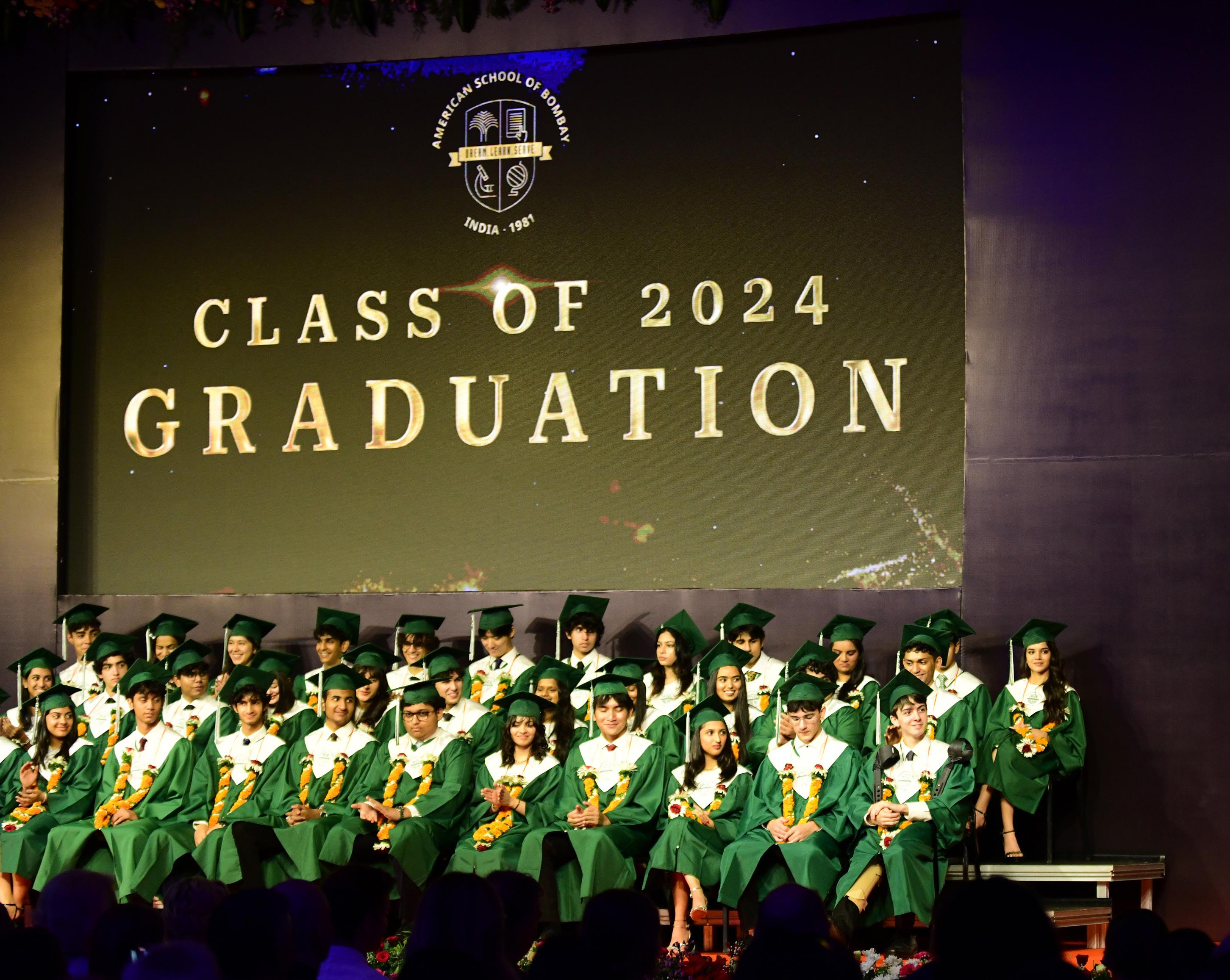
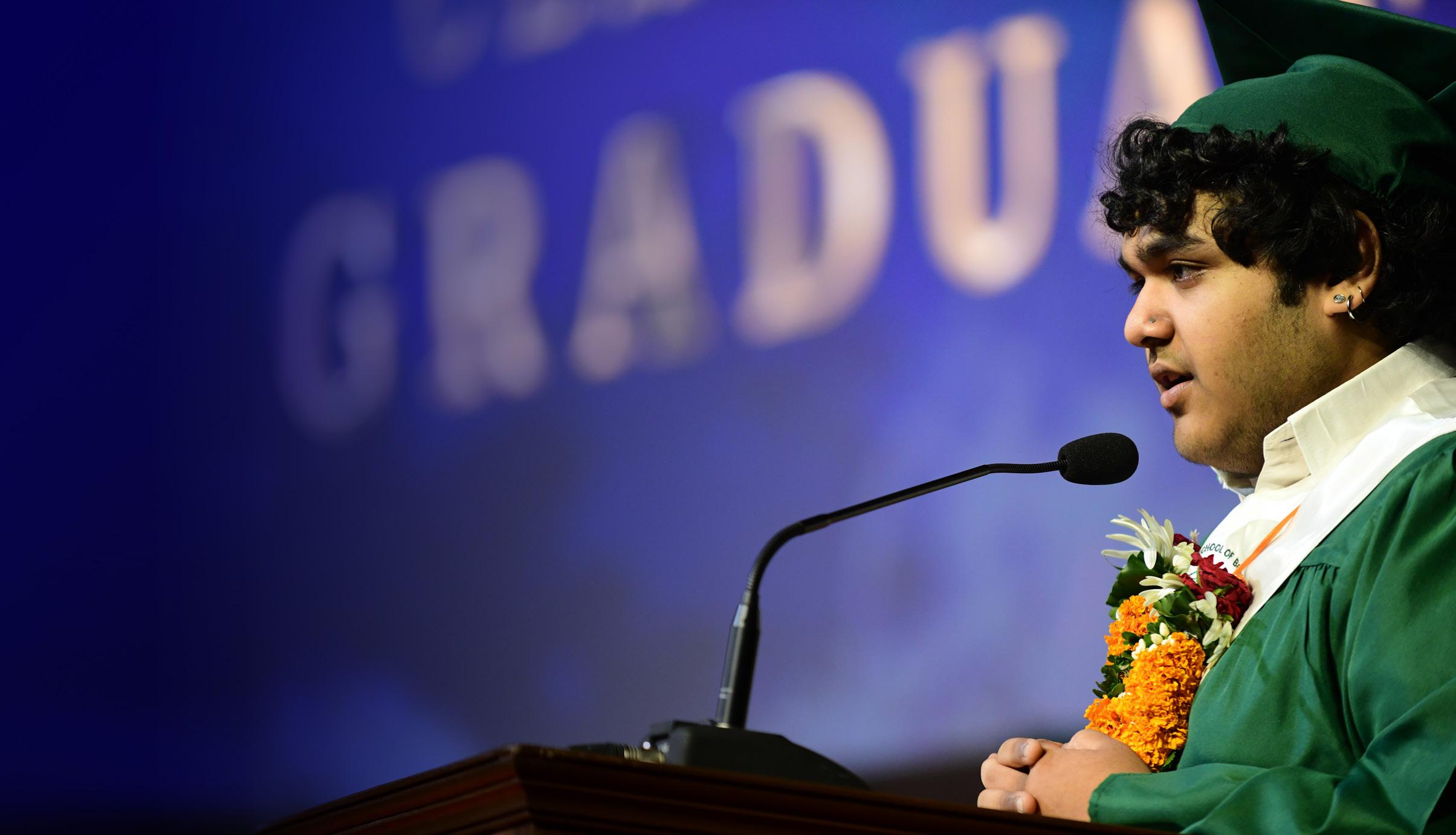
STANDING UP HERE IS THE FINAL CHECKPOINT IN WHAT HAS BEEN A GRUELING YET EQUALLY REWARDING JOURNEY. A JOURNEY CHARACTERIZED BY UNCERTAINTY, GROWTH, AND PERSEVERANCE
Here are some life lessons from the class of 2024: Prioritize that which is important…Be as prepared as you can…And trust yourself…What I cannot express in words, even if given all the time in the world, is my gratitude to my fellow classmates for making the past three years truly remarkable. I cannot wait to see all the amazing feats that will be accomplished by each and every one of you.
ZARAR KARIM, CLASS OF 2024
“
”
SARITA PEREIRA, ASB FACULTY
“
INVITE YOU TO LOOK AROUND THE CONSIDER ALL THE PEOPLE AROUND YOU LIFT YOU TO THIS MOMENT. THEY ARE WHO NAGGED YOU TO STUDY A LITTLE SCROLL A LITTLE LESS …
invested in you, believed in you, and hopefully taught yourselves. The energy in the room is electric; it manifests love, delight. Savour it…As lauded writer Sadhaat Hassan now on the threshold of endless possibilities, your lives are dreams and realities intertwine”. Your next assignment is to go with humility, integrity, determination and kindness. Remain continue to teach and lead by example…Congratulations to you for everything.


ASB CLASS OF 2024
RAJ AGARKAR
RIYA AGRAWAL
AHMAD HADIF AZIMAN AHMAD ZUWAIRI
NAVYA BANGA
SAKET BANSAL
ISSAC BIJU
KRISH CHOKSI
PREM GALANI
SANA GANDHI
PIETER GLORIOSO
PALAASH GOYAL
EMIR IMANOV
ARJUN IYER
ANAYA JAIN
HARSHITA JINAGA
ZARAR KARIM
KARAMVIR KHANNA
AANYA KOCHHAR
ARIANAH LALJI
SHREYA NARANG
ANSHUMANN NEVATIA
BERNARDO PIMENTEL
HREHAAN ROSHAN
SCHENELLE SALDANHA
KABIR SALUJA
MAAHI SANGHAVI
VEDANTH SATWALEKAR
TANVI SEKHSARIA
DEV SHAH
SAMARA SHAH
NIRVAAN SIDHWANI
YEONGDONG (DANIEL) SON
JOHAN SORENSEN
ASHVATH SRINIVAS
AMYRA SURI
ANIKA WELING
VALENTIN WIGISHOF
”
FACULTY


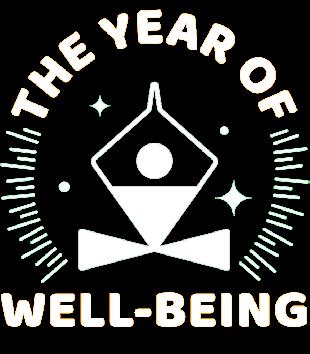
Learn more at asbindia.org
ELEMENTARY CAMPUS SECONDARY CAMPUS Commercial 2, SF2, G Block, Tower 4, Kohinoor City, Bandra-Kurla Complex Road, Off LBS Marg, Kurla
400051
22 6131 3600 +91 22 6272 7272
(W),
Bandra
(E),
Mumbai 400070 Mumbai
+91
























































